#the buddhist reincarnation cycle)
Explore tagged Tumblr posts
Text
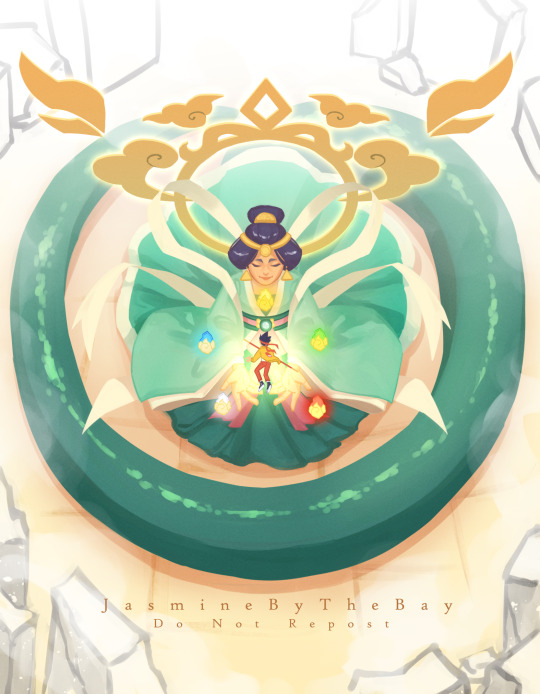
ouroboros follows samsara 🐍
#lego monkie kid#lmk#mk#qi xiaotian#nuwa#lmk nuwa#something something lmk taking inspiration from jttw's buddhist influences when writing nuwa#and how one of the foundational doctrines of buddhism is the cycle of reincarnation aka samsara#and the ultimate goal is to break the cycle of reincarnation aka achieve nirvana#as well as the concept of ouroboros the snake that eats its own tail representing the cycle of death and rebirth
566 notes
·
View notes
Text


tengu doodles (the inspo for the first picture should be above)
Nana: Torino...
Sorahiko: Yeah?
Nana: Did you remember to teach Kotarou how to change back?
#bnha#shimura kotarou#gran torino#shimura nana#torino sorahiko#shih's art#my neighbor torino au#actually all three (nana toshinori and kotarou) get to have tengu forms courtesy of being connected#to the daitengu (think king tengu; progenitor tengu even) yoichi#the difference between them and torino though is that they are still locked into a mortal lifespan#so i guess really the question of my neighbor torino au is#immortality (for fear of death; afo) vs immortality (for stewardship reasons; torino) vs mortality (which is incidentally also#the buddhist reincarnation cycle)
22 notes
·
View notes
Text
South Asian and Hindu Influences in ATLA (Part 2)
disclaimer: i was raised culturally and religiously hindu, and though i've tried to do my research for this post and pair it with my own cultural knowledge, i'm not an expert on hinduism by any means. should i mess up, please let me know.
please also be aware that many of the concepts discussed in this post overlap heavily with religions such as buddhism and jainism, which might have different interpretations and representations. as i'm not from those religions or cultures, i don't want to speak on them, but if anyone with that knowledge wishes to add on, please feel free.
Part 1
In the previous post, I discussed some of the things ATLA got right in its depictions of desi and hindu cultures. unfortunately, they also got plenty of things wrong - often in ways that leaned towards racist caricatures - so let's break them down, starting with...
Guru Pathik
both the word "guru" and name "pathik" come from sanskrit. pathik means "traveler" or "he who knows the way" while guru is a term for a guide or mentor, similar to a teacher.
gurus were responsible for the very first education systems in ancient india, setting up institutions called gurukuls. students, referred to as disciples, would often spend years living with and learning from their gurus in these gurukuls, studying vedic and buddhist texts, philosophy, music and even martial arts.
however, their learning was not limited merely to academic study, as gurus were also responsible for guiding the spiritual evolution of their disciples. it was common for disciples to meditate, practice yoga, fast for days or weeks, and complete mundane household chores every day in order to instill them with self-discipline and help them achieve enlightenment and spiritual awareness. the relationship between a guru and his disciple was considered a sacred, holy bond, far exceeding that of a mere teacher and student.
aang's training with guru pathik mirrors some of these elements. similar to real gurus, pathik takes on the role of aang's spiritual mentor. he guides aang in unblocking his chakras and mastering the avatar state through meditation, fasting, and self-reflection - all of which are practices that would have likely been encouraged in disciples by their gurus.
pathik's design also takes inspiration from sadhus, holy men who renounced their worldly ties to follow a path of spiritual discipline. the guru's simple, nondescript clothing and hair are reflective of the ascetic lifestyle sadhus are expected to lead, giving up material belongings and desires in order to achieve spiritual enlightenment and, ultimately, liberation from the reincarnation cycle.
unfortunately, this is where the respectful references end because everything else about guru pathik was insensitive at best and stereotypical at worst.
it is extremely distasteful that the guru speaks with an overexaggerated indian accent, even though the iranian-indian actor who plays him has a naturally british accent. why not just hire an actual indian voice actor if the intention was to make pathik sound authentic? besides, i doubt authenticity was the sole intention, given that the purposeful distortion of indian accents was a common racist trope played for comedy in early 2000s children's media (see: phineas and ferb, diary of a wimpy kid, jessie... the list goes on).
furthermore, while pathik is presented a wise and respected figure within this episode, his next (and last) appearance in the show is entirely the opposite.

in the episode nightmares and daydreams, pathik appears in aang's nightmare with six hands, holding what appears to be a veena (a classical indian music instrument). this references the iconography of the hindu deity Saraswati, the goddess of wisdom and knowledge. the embodiment of divine enlightenment, learning, insight and truth, Saraswati is a member of the Tridevi (the female version of the Trimurti), one of the most respected and revered goddesses in the Hindu pantheon... and her likeness is used for a cheap laugh on a character who's already treated as a caricature.
that's bad enough on its own, but when you consider that guru pathik is the only explicitly south asian coded character in the entire show, it's downright insulting. for a show that took so many of its foundational concepts from south asia and hinduism and yet provided almost no desi representation in return, this is just rubbing salt in the wound.
Chakras
"chakra", meaning "circle" or "wheel of life" in sanskrit, refers to sources of energy found in the human body. chakra points are aligned along the spine, with energy flowing from the lowest to the highest point. the energy pooled at the lowest chakra is called kundalini, and the aim is to release this energy to the highest chakra in order to achieve spiritual enlightenment and consciousness.
the number of chakras varies in different religions, with buddhism referencing five chakras while hinduism has seven. atla draws from the latter influence, so let's take a look at the seven chakras:
Muladhara (the Root Chakra). located at the base of the spine, this chakra deals with our basest instincts and is linked to the element of earth.
Swadhisthana (the Sacral Chakra). located just below the navel, this chakra deals with emotional intensity and pleasure and is linked to the element of water.
Manipura (the Solar Plexus Chakra). located in the stomach, this chakra deals with willpower and self-acceptance and is linked to the element of fire.
Anahata (the Heart Chakra). located in the heart, this chakra deals with love, compassion and forgiveness and is linked to the element of air. in the show, this chakra is blocked by aang's grief over the loss of the air nomads, which is a nice elemental allusion.
Vishudda (the Throat Chakra). located at the base of the throat, this chakra deals with communication and honesty and is linked to the fifth classical element of space. the show calls this the Sound Chakra, though i'm unsure where they got that from.
Ajna (the Third Eye Chakra). located in the centre of the forehead, this chakra deals with spirituality and insight and is also linked to the element of space. the show calls it the Light Chakra, which is fairly close.
Sahasrara (the Crown Chakra). located at the very top of the head, this chakra deals with pure cosmic consciousness and is also linked to the element of space. it makes perfect sense that this would be the final chakra aang has to unblock in order to connect with the avatar spirit, since the crown chakra is meant to be the point of communion with one's deepest, truest self.
the show follows these associations and descriptions almost verbatim, and does a good job linking the individual chakras to their associated struggles in aang's arc.
Cosmic Energy
the idea of chakras is associated with the concept of shakti, which refers to the life-giving energy that flows throughout the universe and within every individual.
the idea of shakti is a fundamentally unifying one, stating that all living beings are connected to one another and the universe through the cosmic energy that flows through us all. this philosophy is referenced both in the swamp episode and in guru pathik telling aang that the greatest illusion in the world is that of separation - after all, how can there be any real separation when every life is sustained by the same force?
this is also why aang needing to let go of katara did not, as he mistakenly assumed, mean he had to stop loving her. rather, the point of shedding earthly attachment is to allow one to become more attuned to shakti, both within oneself and others. ironically, in letting go of katara and allowing himself to commune with the divine energy of the universe instead, aang would have been more connected to her - not less.
The Avatar State
according to hinduism, there are five classical elements known as pancha bhuta that form the foundations of all creation: air, water, earth, fire, and space/atmosphere.
obviously, atla borrows this concept in making a world entirely based on the four classical elements. but looking at how the avatar spirit is portrayed as a giant version of aang suspended in mid-air, far above the earth, it's possible that this could reference the fifth liminal element of space as well.
admittedly this might be a bit of a reach, but personally i find it a neat piece of worldbuilding that could further explain the power of the avatar. compared to anyone else who might be able to master only one element, mastering all five means having control of every building block of the world. this would allow the avatar to be far more attuned to the spiritual energy within the universe - and themselves - as a result, setting in motion the endless cycle of death and rebirth that would connect their soul even across lifetimes.
#atla#atla cultural influences#hinduism in atla#welp i thought this would be the last part but i ended up having more to talk about than i thought#so i'll save the book 3 inspirations for the next post#including my absolute favourite combustion man#and by favourite i mean kill it with fire why did you ever think this was okay to do writers
506 notes
·
View notes
Note
how does rebirth and reincarnation work in Buddhism
do memories carry over and Can personality traits or characteristics also stay the same
or does being reborn erase everything and basically reboot a person
is everyone reincarnated or just some people and what causes rebirth
if you don’t want to explain it can you please reply with links to websites where I can find information on the topic
Disclaimer: Everything I write here is less Indian Buddhism, and more "sinicized Buddhist concepts", aka "Chinese adoptation of the ideas of karmic laws and reincarnation, with a bunch of tweaks".
-There are 6 paths of rebirth: Heavenly/Deva, Asura, Human, Beasts, Hungry Ghosts, Hell. In practice, because of unfamiliarity with the Hindu Asura ("wrathful demigods"), it often gets simplified into 5 paths instead.
-Based on one's karma (consequences of one's causes), one is reborn into one of these Paths after death. The first 3 are commonly seen as the "3 good paths", while the last 3 are the "3 bad paths".
-Technically, even being reborn as a celestial being does not free you from suffering, since, despite the incredibly long lifespan of celestials and the pleasures they enjoy, their stay there is still not infinite, and they'll be reborn into a lower path once their Good Deeds Bank runs out, so to speak.
-However, in lay practice, being reborn in the Heavenly path is often considered "Good enough".
-Similarly, in more doctrinal Buddhism, the concept of "non-being" and the lack of a permanent, eternal self is a big thing (where there's no continuation of the self between each life, memory-wise or personality-wise).
-Yet after its spread to China, it was adjusted to fit, and syncretized with existing beliefs about souls and ancestor worship, and honestly, folks pretty much assumed that there is a...soul thingy that gets reincarnated, and some sort of continuation exists between each life.
-In Northern-Southern dynasty and Tang legends, there are a lot of tales about people who remembered their past lives, or people who suffered misfortune/got a lawsuit from ghosts in the Underworld bc of bad things they did in another life.
-However, in the latter case, they often don't remember. It is kinda implied that reincarnation itself blurred/erased their memories, but never explicitly explained.
-The much later Ming-Qing addition of Mengpo and her amnesia soup could be seen as a "fix-it" to that question: people don't remember their past lives bc the amnesia soup is mandatory, and the few who remembered are folks who had found a way to avoid drinking it.
-Like all folklore stuff, it's far from universally adopted, and in Liaozhai, you can still see tales like Lian Xiang's, where the fox spirit in question died, reincarnated into a human body, and remembered her old ghostly rival-turned-best-friend upon seeing her again.
-In vernacular novels and tales about reincarnated immortals and celestial deities, like JTTS and JTTN, it's more common for the protagonists to remember their original self from start to finish, or recover their memories after being informed of that fact and settle on working their way back into their old position.
-As for "does everyone have to go through reincarnation?" Unless you are a Buddha, a Bodhisattva, or Arhat, technically yes.
-After Daoism adopted the Buddhist ideas of karma and reincarnation, there were also works that suggested, by attaining immortality, you wouldn't have to reincarnate again...
-But I personally saw that as more of a "immortality just means no natural death, not unkillable" situation——the immortal in question won't have to reincarnate bc they can no longer die of old age, but if sth comes along and kill them, or they got demoted by the Heavenly Emperor for breaking celestial laws, their soul will still re-enter the cycle.
-Lastly, what causes rebirth? Well...existing. As long as you are within the Realm of Desire and a being of the Six Paths, you are subjected to the cosmological cycle, and to Buddhists, the only way out is attaining enlightenment.
211 notes
·
View notes
Text
Avatar Cycle Trivia
Avatar Wan
Wan's name translates to "ten thousand" in Mandarin Chinese, as he lived ten thousand years before Avatar Korra. His name is also a pun on "one", as in Avatar number one.
Wan wore the colour of each of the four nations during his battle against Vaatu. His robes were yellow and orange (air), his armbands were green (earth), his sash was blue (water), and his scarf was red (fire).
In addition to becoming the first Avatar, Wan is also the first true firebender, as he was the first person to learn firebending from a dragon.
By fusing with Raava during Harmonic Convergence, Wan is technically the oldest Avatar to be identified, being 21 at the time.
The Earth Kingdom battlefield where Wan died is the same field that Zuko visits millennia later in Zuko Alone (Book 2: Episode 7). Interestingly, Wan first appeared in Beginnings, Part 1, which was the seventh episode of Legend of Korra, Book 2: Spirits.
Avatar Yangchen
Yangchen is the only known Avatar to have a sibling (Jetsun).
Yangchen is technically the first Avatar to have an established Team Avatar (not counting Wan and Raava).
Yangchen had split-personality disorder with her past lives, where she essentially suffered from nightmares of her past lives bleeding into her present self.
Yangchen's companion Kavik is the first person ever seen get chi-blocked.
Yangchen did not like the idea of people creating statues of herself in the future. Ironically, she was greatly revered in the Four Nations, and a statue each was built in both the Eastern and Western Air Temples.
Avatar Kuruk
Kuruk is currently the only known Avatar whose predecessor and successor were both women (Yangchen and Kyoshi respectively).
Kuruk had more lovers in 3 decades than Kyoshi did in over 2 centuries (the true story is more tragic).
Kuruk had a habit of challenging random people to feats of strength, which makes him the only known Avatar in history to have participated in an Agni Kai.
Kuruk was the best hunter and tracker in the history of the Four Nations. It's said there was nothing he couldn't hunt or track down (that includes spirits).
Kuruk is the only known Avatar to enter the Spirit World after death. Considering that only people with a special connection to the Spirit World can enter at death (such as Iroh and Yue), this means Kuruk must have had a spiritual connection rivalling that of most Air Nomad monks or nuns.
Avatar Kyoshi
Kyoshi is the only known Avatar known to be of mixed nationality; her father was from the Earth Kingdom, while her mother was a renegade Air Nomad.
Kyoshi had a rare condition with her earthbending where she could move large objects with ease but had difficulty in moving smaller objects (Suffering From Success).
Kyoshi has witnessed more passings of Sozin's Comet than anyone else, with three (not counting Lao Ge).
Kyoshi learned the secret to immortality from Lao Ge, which led her to have the longest lifespan of any Avatar.
Kyoshi has threatened both the Earth King and the Firelord.
Avatar Roku
Roku and Firelord Sozin share the same birthday.
Roku has been featured in the introduction sequences of both Avatar: The Last Airbender and The Legend of Korra.
Roku is the only known Avatar to appear old when he was called upon by the current Avatar.
When Roku entered the Avatar State for the first time, he destroyed the Fire Sage Temple.
Roku's dragon Fang is the only animal companion ever seen in the Spirit World.
Avatar Aang
It took Aang longer than any Avatar in history to become fully realized, being over a century old.
Aang has a scar on his back and on his foot, because of how electricity works.
Aang choosing four toys out of thousands – to identify him as the Avatar as these four toys were the same ones that past Avatars had chosen for generations when they were children – was the same procedure used by the Tibetan Buddhist monks to recognize the next reincarnation of the Tulku Lama.
Aang has met the original source of every bending art: a flying bison for air, the Moon Spirit for water, badgermoles for earth, and two dragons for fire.
Aang is the first Avatar to have his picture taken.
Avatar Korra
At four years old, Korra is the youngest Avatar in history to be identified.
Korra is the first Avatar to learn spiritbending.
Korra is the only Avatar to break out of bloodbending without the use of the Avatar State (sorry, Aang).
Korra is the only Avatar to have killed a member of her own family (Unalaq).
Korra is the first known person to ever tame a polar bear-dog (Naga).
Miscellaneous
Wan and Roku are the only two Avatars to die in combat.
Roku and Aang are the only two Avatars to fight a volcano. Aang was successful, while Roku died.
Aang and Korra are the only two Avatars to ever be defeated in the Avatar State.
Aang and Kyoshi are the only two Avatars to ever get hit by lightning. Ironically, when Kyoshi was hit by lightning, her chakras were opened and she gained the ability to enter the Avatar State; conversely, Aang's chakras were blocked and he was unable to enter the Avatar State.
Kuruk and Roku are the only two Avatars to have been identified the "traditional" way in their respective nations at 16; Wan fused with Raava at 21, Kyoshi was identified at 16 when she recited Kuruk's poem, and Yangchen, Aang and Korra were identified at younger ages.
Yangchen, Aang, and Korra are the only Avatars to have been identified at younger ages than 16.
Wan, Aang, and Korra are the only Avatars who are modeled after real-life people. Wan is modeled after co-creator Bryan Konietzko (but with cooler hair); young Aang is modeled after Arjuna, Sifu Kisu's son (but Aang is bald), while adult Aang is modeled after co-creator Mike DiMartino; and Korra is modeled after various female MMA fighters, most notably Gina Carrano.
Roku and Korra are the only two Avatars who have worn an outfit from each of the four nations on-screen.
Roku and Korra are the only two Avatars to have connections to royalty. Firelord Zuko, and thus every following Firelord, are descendants of both Roku and Sozin, whereas Korra's father was a member of the Northern Water Tribe's royal family, and was later elected as the chief of the newly independent Southern Water Tribe.
When Kyoshi first met Yangchen, she (Kyoshi) mistook Yangchen for her own mother.
When Kyoshi first met Kuruk, she almost drowned her physical body trying to communicate with him.
Roku and Yangchen are the only two Avatars to have hugged the current Avatar at the time (Aang and Kyoshi respectively).
Wan, Korra, and Kuruk are the only Avatars to refer to Raava by name, although the latter (Kuruk) had never met Raava.
Yangchen, Kuruk, and Aang are the only Avatars to have invented an airbending technique. By extension, Kuruk is the only person outside of the Air Nomads to invent an airbending technique (he didn't get his mastery tattoos, what a shame).
Aang and Korra are the only two Avatars to learn energybending.
Kyoshi, Roku, and Aang are the only Avatars to use bending after their respective deaths.
Kyoshi, Roku, and Aang are also the only Avatars to have descendants (but let's be realistic, so did Kuruk).
Aang and Korra both learned their native element from a companion of the previous Avatar, and their final element from a descendant of the previous Avatar. Aang learned airbending from Monk Gyatso, a companion of Roku, and learned firebending from Zuko, Roku's great-grandson. Korra learned waterbending from Katara, Aang's wife, and learned airbending from Tenzin, Aang and Katara's youngest son.
That's all the fun facts I could find.
291 notes
·
View notes
Text
beyond “sorcery fight”
Ju (呪): curse
Jutsu (術): technique
Kai (廻): returning to a starting point in a circular movement
Sen (戦): fight
廻 can be used in terms such as 輪廻 (the cycle of samsara), which is the Buddhist concept of reincarnation or the cycle of birth, death, and rebirth. It is inherently tied to 苦 (suffering), and the ultimate goal is to achieve 涅槃 (Nirvana), which represents liberation from 輪廻.
This parallels the cyclical nature of cursing. Sukuna was born an abomination, cursed by the world, so he cursed the world back, perpetuating the cycle. But in Ch. 268 Yuji says: “Sukuna… let’s try it one more time. Living not by cursing someone, but by existing alongside them.” Defeated, Sukuna says in Ch. 271: “Should there be a next time… perhaps it would be nice to walk a different path,” effectively ending his role in the cycle.
22 notes
·
View notes
Text
Seems like there is some discourse on twitter/now X on the afterlife after SPOILER ALERT it was revealed that Sukuna’s unborn twin had a soul (still considered one soul with his though) that reincarnated.
This makes reincarnation canon in the jjk world, which I guess it always was, if we think about the implications of how tengen and the star plasma vessel and the six eyes were tied by fate.
I was particularly interest in the implications on Gojo and also since the chains of fate that tied them are broken.
I touched on north and south in previous analysis posts. As much as I love Gojo, he was never going to be revived because it just made sense for Gege to finish his character arc that way.
With the newer chapters showing that his brain was bleeding, and that he was sliced in such a way where his heart and gut may be cut through, it also wasn’t going to be likely.
North was starting anew, meaning rebirth / reincarnation. Not returning to life as Gojo. Gojo was satisfied with his life as he left it.
So it seems like maybe the airport was limbo. And he opted for South, as the chapter title indicated. To go back, which Mei Mei’s words to Nanami seemed to be accepted by those present. Going back to the past, as they once were.
I couldn’t really read or find multiple discourses on the subject on twitter (just a couple), but I think they’ve expanded it in the direction I touched on in my recent post on souls that went a bit too far. In sum, were all six eyes users in the history of Japan the same soul - Gojo Satoru?
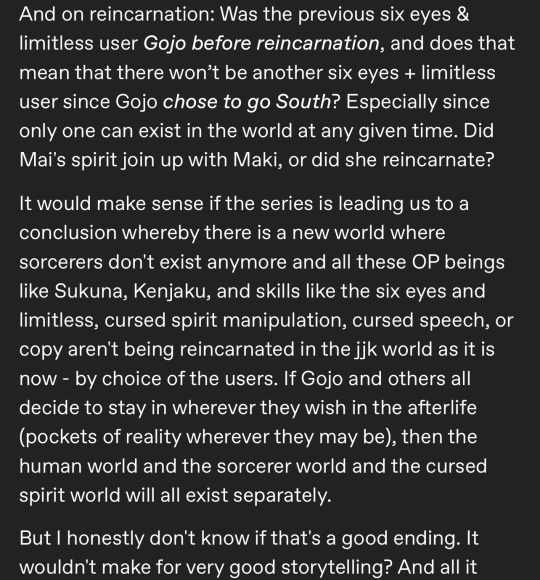
Someone’s interpretation was that Gojo and Geto were also tied by fate, seeing as a CSM user can help regain balance in the world due to the increase in curses caused by the presence of six eyes + limitless like with Gojo’s birth. But this was never canon or ever officially mentioned.
I wonder myself if, in this lifetime, the cycle of rebirth / fate was broken not only because of Toji and Kenjaku, but also because of a CSM user like Geto allowed someone strong like a six eyes user to understand empathy and love. To connect with those weaker than him and not keep coming back to life - as per Yuta who questioned Uro -
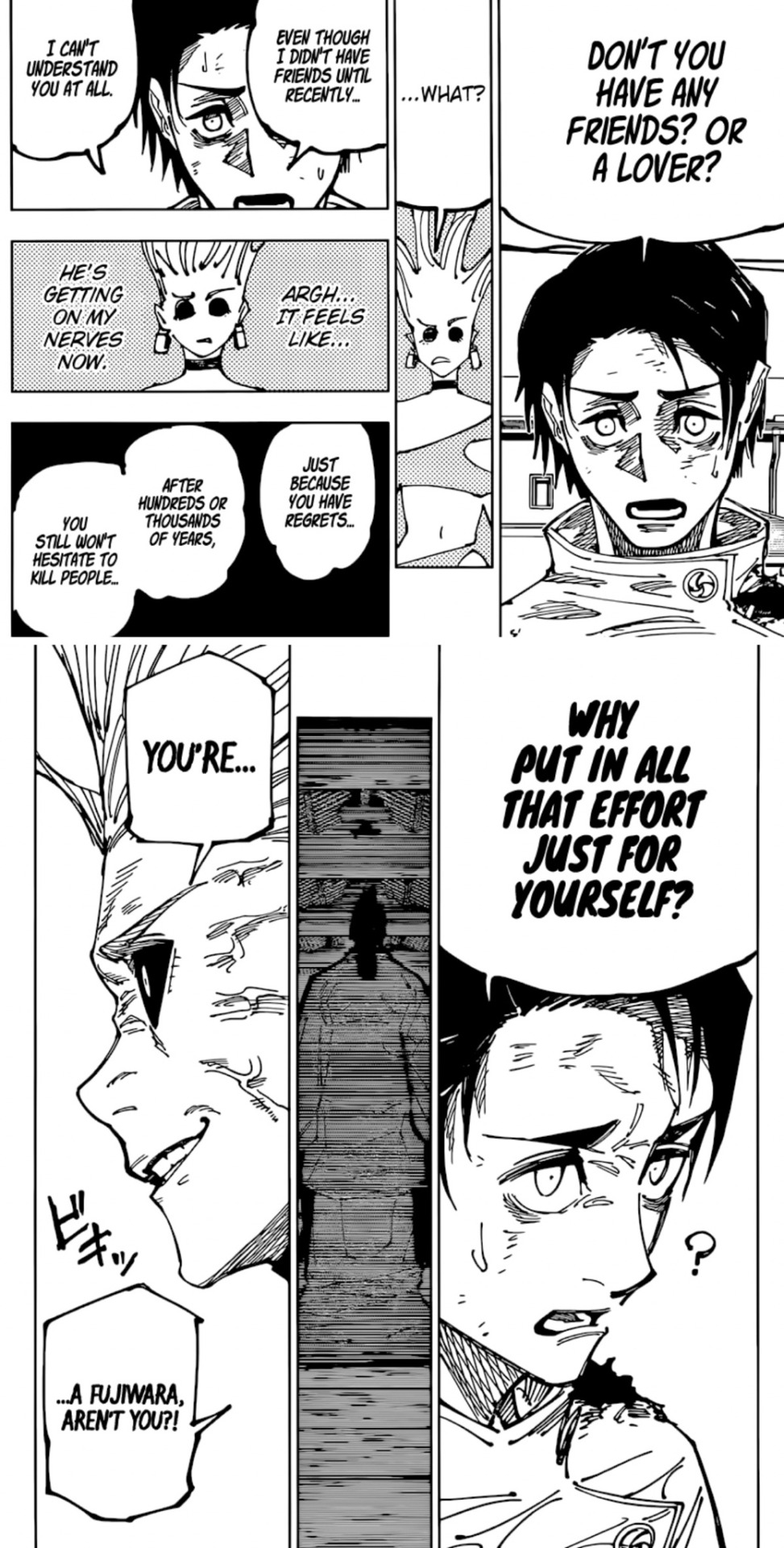
Why do you keep coming back? Those with compassion and loving kindness (again Buddhist themes) may become free from the suffering and cycle of rebirth/reincarnation. Why keep choosing to? I guess the focus is on unresolved and unfinished business.
So instead of choosing to reincarnate as someone new, the cycle just ends, as they all choose to remain as souls and go South. To stay as they are. Together.
I still stand firm in my desire to believe what i wrote a while back on Camillas and musings on the afterlife:
The cover of vol. 26 was Gojo visiting
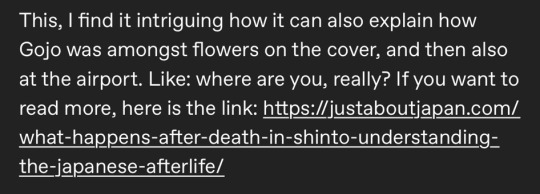
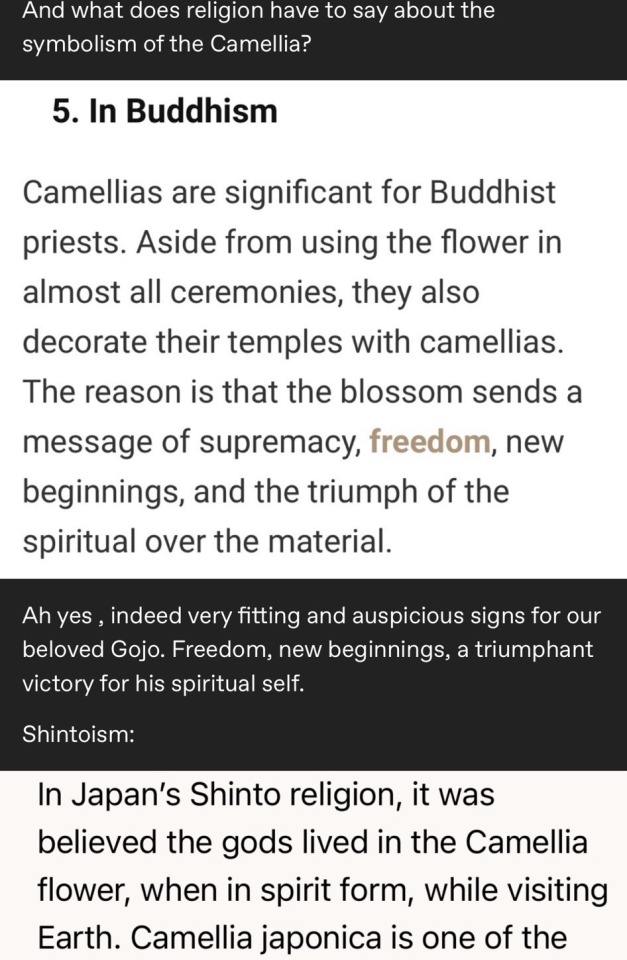
And they are a form of souls that died without regret, thus elevated to a Kami (or deity):
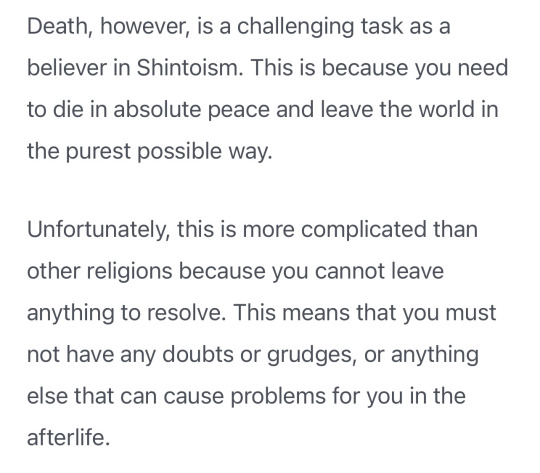
I think / headcannon that in the jjk world they are souls not bogged down with vengeance or being forced to reincarnate. They all presumably died, free of lingering attachments to the world.
This may allow those who died “without regret” to choose where they can live in another world. Which is pretty much a Shinto belief, but when applied to the jjk world, may depend on how they died.
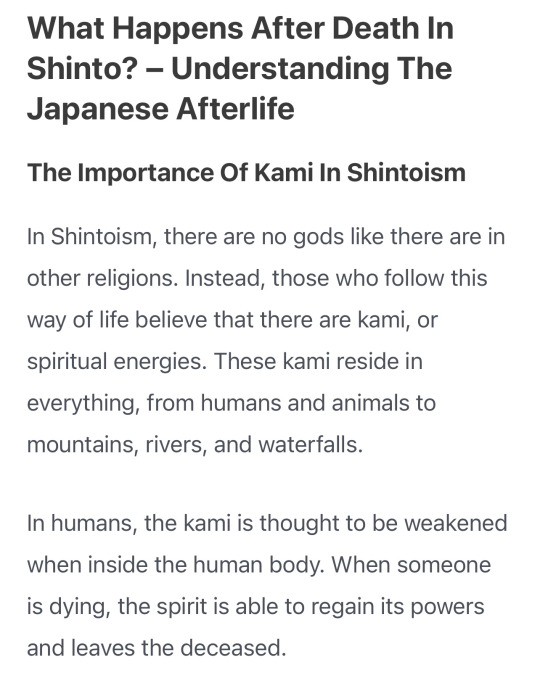
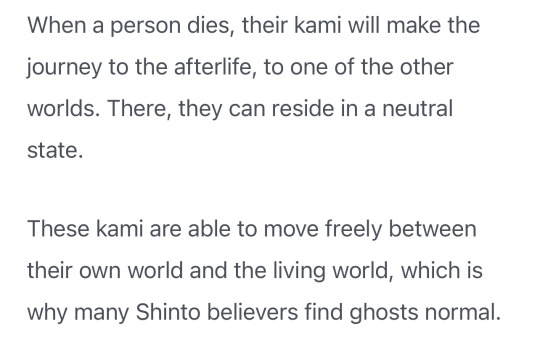
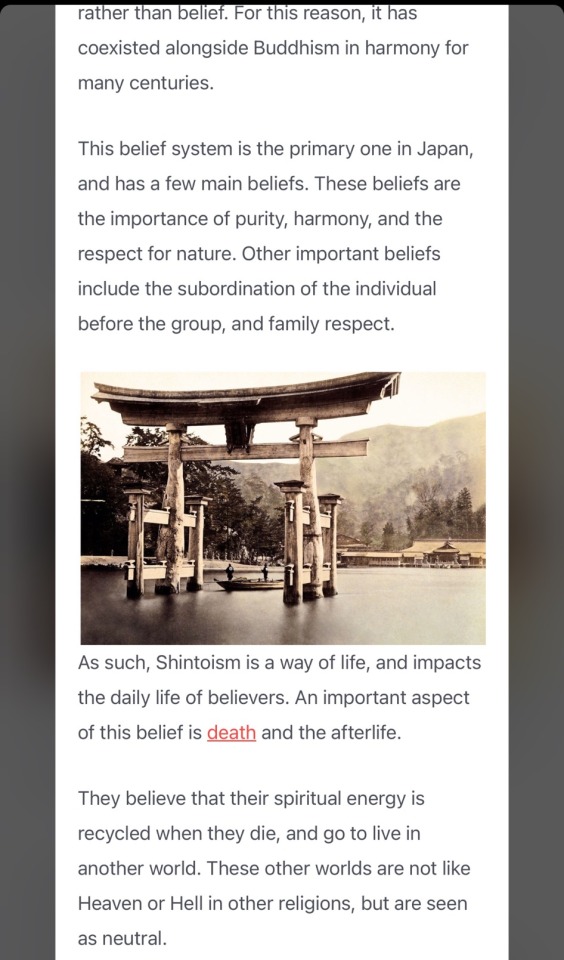
Anyway, I’ll be waiting until Gege reveals more about what it all means within the jjk world. For now, here’s the link on the info on Shintoism I took those grabs from: https://justaboutjapan.com/what-happens-after-death-in-shinto-understanding-the-japanese-afterlife/
I also forgot to add this piece:
#jujutsu kaisen#jjk analysis#jjk meta#jjk spoilers#satosugu#gojo satoru#geto suguru#jjk#stsg#jujutsu kaisen theory#jujutsu kaisen theories#jujutsu kaisen meta#jujutsu kaisen analysis#jujutsu kaisen afterlife#jjk afterlife#jjk stsg
59 notes
·
View notes
Text
The Soul Still Burns: Analysis of the Lords of Cinder (DS3)
What follows is a short essay on the Lords of Cinder from Dark Souls 3, exploring their symbolism on spiritual and metatextual levels. After that is a related reading of Slave Knight Gael, the final adversary of the Dark Souls trilogy.
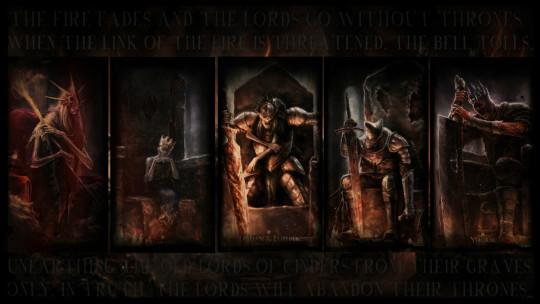
The Lords of Cinder are in many ways the primary adversaries of Dark Souls 3. This title they share, “Lord of Cinder,” refers to a personage who has rekindled the first flame, keeping the cycle of light and dark going.
Cinder is a substance which continues to burn without the presence of fire but does not reduce to ash. So euphemistically, it seems that the Lords are somehow stuck in their process of purification, and the game suggests that the world is stuck along with them; this is why it is the Ashen One’s task to “set them upon their thrones”—to hurry them along and thus allow the world to follow its natural decline. As individual characters, each of these Lords represents a different attitude that complicates and prolongs the cycle.
Through these stubborn Lords the game is commenting on at least two things. On the metaphysical level, it reflects the Buddhist idea that certain attitudes keep people reincarnating over and over again, unable to extricate themselves from the material world of suffering (samsara). While on the metatextual level, the game is suggesting that certain attitudes keep players coming back to Dark Souls again and again, starting new games, making new builds and revisiting old files.
The idea there on the metaphysical side finds an easy analogy in Buddhist doctrine: the “three poisons,” the three root causes of suffering. These are hatred, greed, and delusion. What’s interesting is that these essential vices also fit pretty easily onto the different types of players that are being caricatured by the Lords. We’ll break these correspondences down in a second.
But First: Why Do They Correspond? So we have these sets of three. Three lords, three poisons in Buddhism, three types of Souls players. How convenient. When we analyze art, we sometimes ask, “Huh, is this structure really there, or am I projecting it into the material?” And if the structure is really there, baked into the work, that doesn’t mean that it’s due to developer intention. Archetypal forms sometimes show up in work via an unconscious influence, be it due to the cultural milieu, personal psychology, or some a priori biological disposition of the human being.
And the thing about Dark Souls is that it’s an unusually honest piece of art, in that its creative team allows their own free associations and intuitions to show up in the work without too much self-censorship or questioning. They make space for a mystery to show up on its own terms, and in leaving its riddles unanswered, there is more space for discovery by the people who play it.
It should also be said that cultural ideas persist for a reason. Beneath the ethics and ideology of the people who originally named the Buddhist “three poisons,” there may be something timeless, something perennially descriptive of human nature. If that is the case, then it would make sense for this same triplicity to unfurl itself in other cultural products. So for one reason or another, these three poisons, these addictions, show up diegetically in the characters and are also expressed in player psychology.
I say all this just because sometimes I feel very aware of the disconnect between much of Souls lore discourse and the broader field of mythological study. Since we are gamers first, there may be this tendency to want to “solve” the lore, but that’s not what we’re doing here. Myth functions because it elaborates our experience of the world through affective resonance; it attaches images and characters and stories which help us anchor our own prelinguistic impressions of the world, cultivating our sensitivity there.
Anyway, let’s look at these Lords.
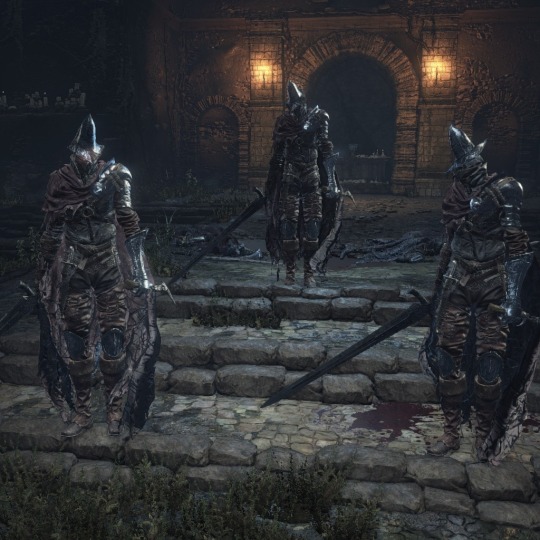
Abyss Watchers Poison: Hatred The lore of the Abyss Watchers is pretty clear: they have an obsessive fixation on the abyss, and are ready to raze an entire town if they suspect abyssal encroachment. This obsession has literally possessed them, as they are now “abyss touched.” Gaze too much into the abyss, etc. They carry such strong contempt for the disavowed object that they don’t care what comes between it and their sword. This is clearly demonstrated by the fact that they are a brotherhood yet are unhesitatingly slaughtering themselves again and again. Hatred has made them blind, and has also caused them to resign their individuality (they are identical, mere instruments of a transpersonal grudge). They cannot die, their hatred keeps them locked in combat.
Type of Player: competitive | Interest: combat The Abyss Watchers are a representation of PvP addicts. They have no powers other than tenacity; they perform the same combos repeatedly. When you are really gripped by a PvP binge in Souls, you often end up doing the same thing again and again. The fight takes place in a mausoleum, on top of many chambers filled with human remains. The fact that this boss fight is instructional about combat, specifically about looking for tells (a cloud of dust always signifies the end of their combos) might be another clue. There is no limit to how good you get at Souls PvP; every foe is an opportunity to improve timing and strategy. You can just keep stacking anonymous bodies under yourself.
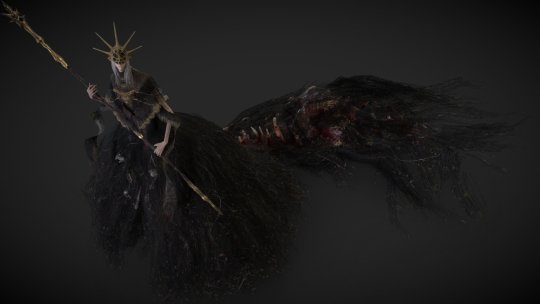
Aldrich Poison: Greed Aldrich invokes the concept of supremacy many times: he is in the supreme area from Dark Souls 1; in the supreme boss room of that area; he wears as a crown the former supreme lord of that area. This is because he devours lords; he tries to take prestige upon himself through acquisition and incorporation—greed.
Type of Player: completionist | Interest: content Aldrich is a commentary on completionist players. He is someone who “plays the game to death”, acquiring every object, reaching every achievement, devouring the soul of the game through taking everything into himself. He becomes bloated by consuming as much of the game’s content as possible. The old God whose likeness he has adopted is Gwyndolin, who was, in narrative terms, the one pulling the strings in the land of the Gods. And in gameplay terms, he is a secret boss. So on both counts we have someone who is elusive, and exists more or less at the boundary of the gameworld. When a player tries to see every last little morsel of a game, they become somewhat like Gwyndolin, a manipulator of a virtual world. If you know too much about a game, you have the risk of being less immmersed.
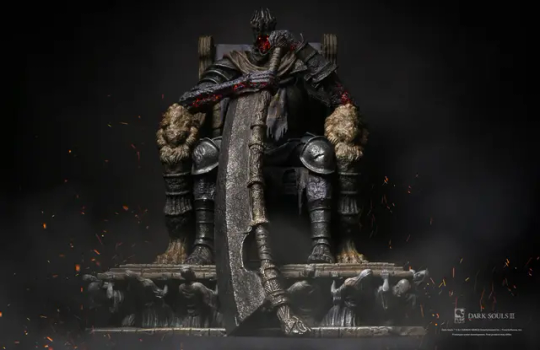
Yhorm Posion: Delusion In Buddhism, the poison of delusion secretly underlies the other two poisons, as the impulse toward hatred and greed are ultimately born of some false view about reality. This is akin to how the profaned capital sits below the rest of the kingdoms. To beat Yhorm you essentially have to “play pretend” with him, picking up a fake super-weapon, or fighting alongside Siegward, a knight who appears to be somewhat deluded about the state of the world, enthralled in the same fantasy as Yhorm himself.
Type of Player: lore researcher | Interest: meaning The profaned capital is full of statues—fixed images of myth; and empty goblets—treasures with no utility. Not to mention the area with the swamp which is full of symbolic imagery, but serves no narrative or mechanical purpose. The entire profaned capital challenges us to make sense of it; it is the ultimate temptation of lorekeepers in DS3. It throws at us a disproportionate amount of reference to DS2, which is famous among Souls players as the least thematically sensible Souls game. The Greatshield of Glory is found right outside Yhorm’s room, in a conspicuous room full of treasure, and yet it is a very impractical shield and offers very little lore value. If a lore-minded player picks it up, it directs them to a legendary personage from the War of Giants, which raises far more questions than it answers. The same is true of much of this area—the Eleanora, the Monstrosities, the Profaned Flame itself—they are all there to get you to speculate. These are the players who come to Souls games again and again, trying to find the “ultimate meaning.” They seek the grail, claim to find it, and then chuck in a pile with the others.
Yhorm's story also imitates the primordial Artorias myth: forsaking his shield in preservation of something more valuable. Other than that Yhorm is largely a cipher when it comes to biography, with a void for a face, which itself epitomizes what must remain at the center of mythology and storytelling: mystery.
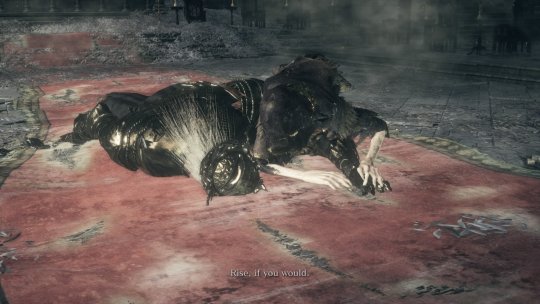
Sit Down and Seek Guidance So we have the three reasons that people become fixated on Souls: the combat, the achievements, and the mystery. But there is a fourth lord of cinder boss, who is conceptually apart from these three: the Lothric Twins. They represent yet another kind of person who must keep playing Dark Souls: the developers. Lothric is striving to produce “a worthy heir,” a proper sequel to Dark Souls 1. The Princes are bound to their chamber as the developers are bound to their project, as that is their curse—“but you may rest here too, if you like.” In this context we can see their duality as the dual nature of having to work on the game and also play it to death. The privilege and the loftiness of the promise of a great piece of art (Lothric), and also having to go back "into the trenches" of the work itself (Lorian). Notably, neither of them can walk, they just teleport around. They are stuck at work, trying to bring the new world into being. Also I can’t go this whole essay without mentioning the obvious: that the Ashen One is bringing Lords to their thrones, and we players and developers have to assume our little chairs and couches when we access this world.
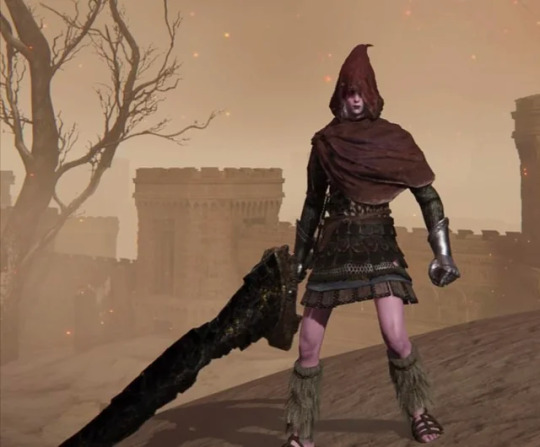
Playing Beyond the Point of Pleasure Of course the most extreme example of someone stubbornly remaining in the world no matter what is Slave Knight Gael. He is looking for pigment, which seems to be a euphemism for the substance of humanity (the Dark Soul). He wants to give it to the painter, the world-creator, so that a new world can be made. He is willing to indulge in a wasteland of abject violence for as long as it takes in order to renew something. Ironic that he is probably only prolonging the current world in his obsessive drive to recycle it faster.
Let’s examine the relationship between the figure of the painter and her relationship to Gael. That she is a spiritual entity is obvious: we never see her touch the ground, she is always in an upper room and lifted on a piece of furniture. Among other things, she is a clear metaphor for life springing eternally. A creative child who continues to paint despite kidnapping and imprisonment. She is the heart of the painted world, itself a place that symbolizes the idea of the representation of reality.
I want to make sure this is clear, because it is a bit of a kaleidoscope to consider. Any subject in Dark Souls stands for many things, but something that the painted world specifically represents is the very concept of representation. So of course the places in our imaginations are painted worlds, but so is this physical world of appearance, the maya of mundane reality. Not to mention that a work of art is a painted world, and the game we’re discussing is a painted world. When a work of art is able to recreate itself in itself, we can see this funny effect of mirrors reflecting mirrors infinitely. This results in seemingly inexhaustible symbolic content—there is so much potential to find meaning and create connections. Because Moby Dick represents a work of literature; the Tempest represents a play; Twin Peaks represents a TV show, these works can offer extensive insights not only into their medium but into the nature of reality. In these and other examples, the representation of the medium within the work may or may not be a single subject, but since Dark Souls is formally a game about levels and level design, the painted world is the heart of its self-reflexivity. The painted world can be pointed to as the summary of this fractal device. And the personification of that device, its ambassador to the player, is the painter.
The miracle or divine child is also an archetype familiar to us from Lothric, in their struggle to produce the “worthy heir.” Reality seeks salvation through the appearance of grace. They want it in a clear, incontestable form—to be able to point at it and say, "thank goodness we went through all that, because look, now here is the meaning, here is that which validates all that came before." In the world of Dark Souls 3 the religion of the masses is the Lothric stuff; meanwhile knowledge of the painted world is much more obscure. Lothric’s religion is obviously regulated and hierarchical, while Gael’s devotion to the painter is highly personal and private: he carries around a scrap of painting; he prostrates to a hidden idol in a small chapel; he considers the painter his family. He is emotionally close to the object of his worship.
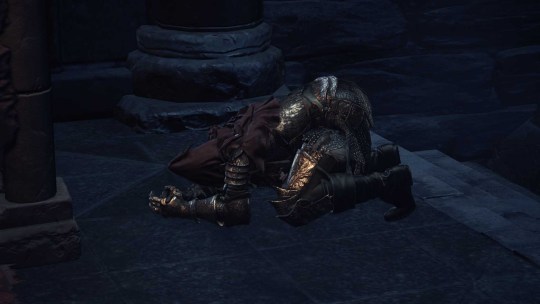
But whether it’s Lothric or Ariandel, they are anticipating the divine child to redeem the world. As an archetype, the child ultimately represents surprise. The possibility of being delighted by life in its creative novelty. The child as an archetype appears in our own behavior when we do something without any sort of contrivance or mental interference, doing something in the world which doesn’t seem to have come from who we conceive ourselves to be. This is miraculous. Such an action enchants the world, and there is no explaining it, even if it may weave all kinds of stories around itself, retroactively framing things that have led up to it as portents or promises. (Though not exclusive to him, this trait is well-known in characterizations of Christ, and DS3 is clearly indebted to Christian iconography, so do with that what you will). Regardless of the specific cultural invocation, the divine child is a personification of something that happens within the human spirit. TFW you are renewed by a fresh and spontaneous engagement with life.
The grace of the miraculous often comes to us through play. Play is more of an attitude than an activity; the feeling of play may come to us through making a painting, or chatting with a friend, or moving around in a video game. We can play video games idly, competitively, experimentally, creatively, studiously, whatever, the feeling of “play” can show up regardless. We can sit there playing a certain game from a certain motivation, and feel totally rote and joyless, and question, “Why am I doing this?” Or we might sit there and play the same game with the same motivation, feeling totally lit up by it, its purpose to us obvious and self-validating. We are not even questioning why we are doing it, we are enjoying life.
This is really the ground that the miraculous tends to land on. Grace, meaning, and an immanent love of life are more likely to show up when we are in flow and not exercising our capacity for self-assessment. But like everything in life, we mistake the images and objects around us for the feeling of grace. Any given object might only be the catalyst once; it’s not about the object. This is extremely easy to see in cases of acute nostalgia; adults chase enchantment through collecting Zelda memorabilia or going to Disneyland, in pursuit of what kindled their spirit as a child. It was never really the game or the character that was doing it, it was what they were able to access within themselves.
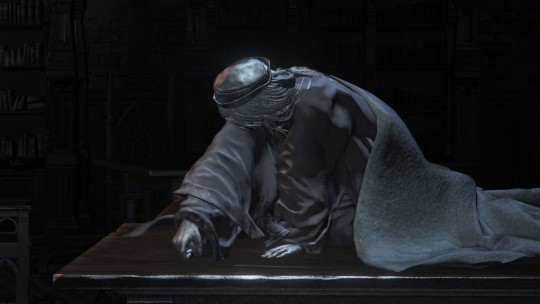
So anyway Gael has yet to realize this. He thinks the Dark Soul is out there in something else. That it will be yielded as a drop if he just kills the right enemy, or 10,000 enemies, or goes to the right place at the right time. You can see that this is something of a synthesis of all the other Buddhist defilements: there are elements of completionism/greed, violence/hatred, mysticism/delusion. There is even the suggestion of the developer of these games again, in that Gael is a “slave,” forced into participation in the world to assist some creative apotheosis. (Isn’t it funny that his weapon is a worn-down executioner’s sword?—whether the person coding or the person playing, we are all “executing” command after command). The thing that really keeps him on the wheel is something beyond any of the player types and their vices; it is almost some sort of pure, amoral automatism, a churning drive that on one side resembles wanton nihilism, and on another side single-minded piousness. Is one disguised as the other, or has Gael somehow stepped beyond this binary? Yet another dichotomy in Dark Souls that begs to be reconciled, but whose tension creates the opportunity to participate creatively in its expansive mythology. When things are held apart we can move between them.
To really understand Gael, we have to contend with the question of a person’s relationship to their own soul, since that relationship is so plainly suggested by Gael and the painter. (This question, by the way, is much elaborated in Elden Ring, with its repeated foregrounding of the image of the maiden or “consort”). If we were to see Gael and the painter as partitions within one person--whether she is his soul, or his inner life, or his better nature, whatever—then in any case Gael is the side which goes out into the world and experiences it. He is the creative extension into the world as its active participant and realizer. Yet he is clothed as the warrior, the executioner. While the one who is dressed as the artist, the painter, just stays in her room and imagines the world—but this is where the magic of creation is really felt. We involve ourselves in life, or in a game, but we are only really changed and renewed when that exterior experience is “brought home” into the inner life. We do something “in the game,” but the act of “painting,” in renewing the world through our creative interpretation, is a decidedly interior experience.
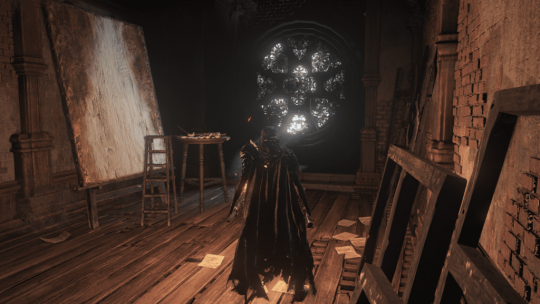
#dark souls#dark souls 3#lords of cinder#game entrainment#dark souls analysis#dark souls lore#ariandel#slave knight gael#the painted world
87 notes
·
View notes
Note
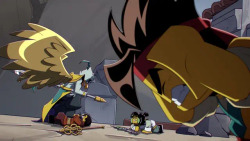
So can we get more context on this situation for the Tang River Water au?
referencing this au.
Literally one of the first things Peng does when they get released from the Scroll is to try and kill who he thinks is Tripitaka [Tang]. Peng presses on Tang so forcefully that the stone around him cracks. Tang doesn't be looking so great afterwards either.
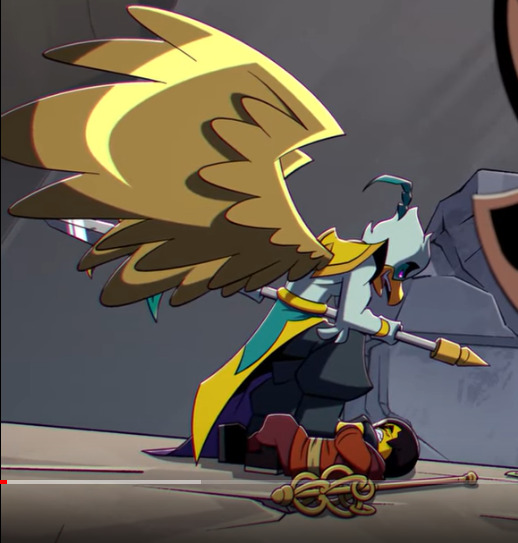
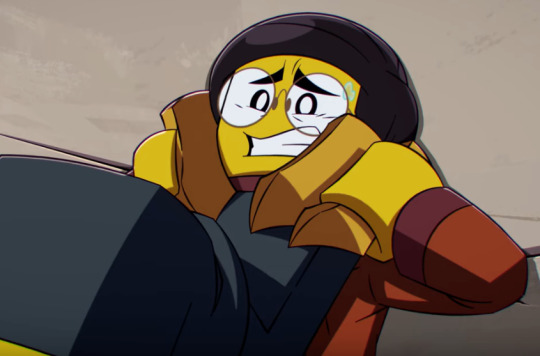
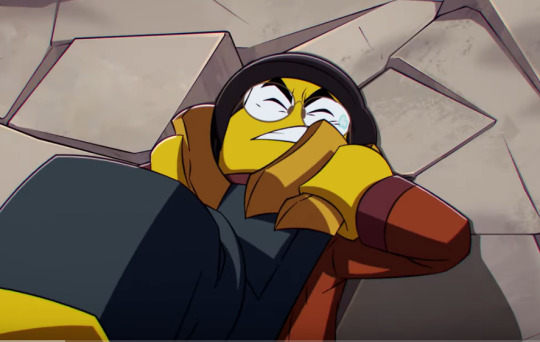

Only reason Tang isn't passing through Diyu after this scene is Azure mentioning that he's just the monk's reincarnation (which 100% must have tickles Peng pink since they of all people know how embarassing it must have been for Buddha's teacher's pet to fail to break the cycle of rebirth). I have seen aus where Tang does die in this scene and his Golden Cicada powers have to come in clutch to keep his soul there. (link to a really cool animatic)
But in the "Mother Child River Tang" au?
Peng immediately takes one look at this *obviously* pregnant monk and just starts screeching with laughter! You know that sound peacock's make thats like a strangled laugh? That is all Peng is doing for their first five minutes out of the Scroll.
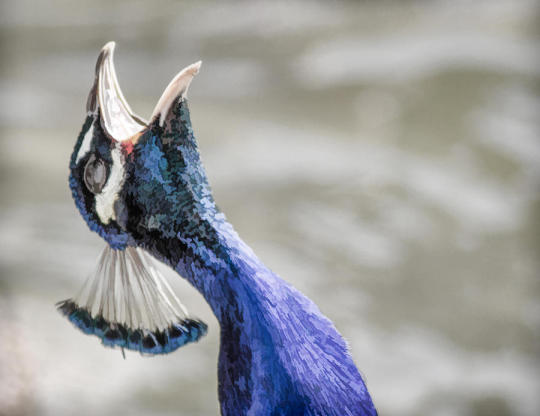
Yellow Tusk has already given Azure a warm welcoming hug and gotten caught up on the most recent millenium by the time Peng manages to catch their breath.
Peng: "The- [peacock cry]! The monk is- [more peacock cries!] ahhhhh! I can't even be mad at him right now! It's so funny!" Tang, still a little hurt, now offended: "Rude. A pregnant man isn't that funny." Peng: "But a pregnant monk is! Looks like that vow of chasity didn't stick eh?" Azure: "Peng, they are not the monk." Peng, laughter stops: "...then who the Diyu are they??" Tang, emboldened: "I'm Tang! Reincarnation and/or decendant of the Great Monk! And this is my husband Pigsy, our son MK, and our friends." Peng, tears in eyes: "HE MARRIED THE-!" [peacock cry!] Azure & Yellow tusk: *both sigh tiredly*
On a more serious note, since Sandy was forced to push Tang out of the way of Yellow tusk's attack + Peng pinned him to the ground, the Monkey King's part of the Scroll is damaged, MK is having a mental breakdown, and if we combine this with "Slow Boiled Stone Egg" au - the Brotherhood has taken Yuebei Xing hostage? Tang is in a lot of physical and emotional distress rn.
Like... enough to trigger early labor-level of distress.
Bodhisattva Guanyin is summoned immediately to Subodhi's temple before any actual training can occur. She's (and many other buddhist deities) so preoccupied in making sure that the Golden Cicada and his baby survives that they are distracted from the threat sieging Heaven at that moment...
Pigsy has to be held back from trying to tear the Brotherhood apart himself. Zhu Bajie wasn't *just* "some demon". He used to be one of the most powerful Marshals in Heaven - commanding 80 thousand heavenly sailors/soldiers. In one mythology, Marshal Tianpeng was even a son of Doumu - the mother of constellations (making him the Queen Mother of the West's brother oddly enough).
Whos to say that Pigsy doesn't accidentally tap into the powers of that life? The whole naval power of Heaven is suddenly at Subodhi's school, waiting for the orders to turn the Brotherhood into a fine red smear on the wall. It's only Tang's own pleading that Pigsy doesn't act rashly.
The chaos does lead to an odd conciencidence occuring though...
Nezha, post-s4: "I do wonder... has the Jade Emperor broken the cycle of rebirth? If not, then that means the location of his soul could prove dangerous if left unchecked. I must contact the Underworld." *starts mediatating* MK: "What do you mean?" Nezha: "The Emperor was eons old. That amount of acculmilated divine power needs a host that can handle it. Like-" Tang & Pigsy's baby: *snorts/burps loudly* Nezha, realising: "-the child of the Golden Cicada and of the Doumu herself..." Yama, King of Hell, astral projecting: "You guys are not gonna believe where the Emperor ended up! He's in a half-demon piglet somewhere- oh there she is!" Tang & Pigsy: ( 0_0) (0_0 ) "uh oh"
#mother child river tang au#slow boiled stone egg au#lmk aus#pregnancy tw#lmk tang#lmk pigsy#lmk peng#lmk azure lion#freenoddles#freenoodleshipping#lmk#lego monkie kid
61 notes
·
View notes
Text

Cycle Of Samsara
Six Realms
Six States of Existence Six Roads of Reincarnation Six Paths of Transmigration Six Realms of Samsara Six Karmic Realms of Rebirth Six Directions of Reincarnation Six Destinies
Wheel of Life
Six Paths (Jp. = Rokudō 六道 or Rokudō-rinne 六道輪廻 or Mutsu no Sekai 六つの世界). Buddhist concept stemming from Hindu philosophies. Commonly translated in English as the “Six Realms of Karmic Rebirth.”
Long before Buddhism's introduction to India, Hindu (Brahman) beliefs and traditions held sway. One important concept was "transmigration," more commonly known in the West as "reincarnation." It holds that all living things die and are reborn again. Your rebirth into the next life will be based on your behavior in your past life. This rebirth occurs again and again. When Buddhism emerged in India around 500 BC, it too stressed this Hindu belief in transmigration, one that still plays a major role in modern Buddhist philosophy. The modern Buddhist concept of Karma is also a byproduct of ancient Hindu beliefs in transmigration and reincarnation.
Among Buddhists, all living beings are born into one of the six states of existence (Samsara in Sanskrit, the cycle of life and death). All are trapped in this wheel of life, as the Tibetans call it. All beings within the six realms are doomed to death and rebirth in a recurring cycle over countless ages -- unless they can break free from desire and attain enlightenment. Further, upon death, all beings are reborn into a lower or a higher realm depending on their actions while still alive. This involves the concept of Karma and Karmic Retribution. The lowest three states are called the three evil paths, or three bad states. The Japanese spellings of all six, plus brief descriptions, are shown below:
1.Beings in Hell. Naraka-gati in Sanskrit. Jigokudō 地獄道 in Japanese. The lowest and worst realm, wracked by torture and characterized by aggression.
2.Hungry Ghosts. Preta-gati in Sanskrit. Gakidō 餓鬼道 in Japanese. The realm of hungry spirits; characterized by great craving and eternal starvation; see below photo/link for “Scroll of the Hungry Ghosts” (Gaki Zōshi 餓鬼草紙)
3.Animals. Tiryagyoni-gati in Sanskrit. Chikushōdō 畜生道 in Japanese. The realm of animals and livestock, characterized by stupidity and servitude.
4.Asura. Asura-gati in Sanskrit. Ashuradō 阿修羅道 in Japanese. The realm of anger, jealousy, and constant war; the Asura (Ashura) are demigods, semi-blessed beings; they are powerful, fierce and quarrelsome; like humans, they are partly good and partly evil. See Hachi Bushu (8 Legions) for details.
5.Humans. Manusya-gati in Sanskrit. Nindō 人道 in Japanese. The human realm; beings who are both good and evil; enlightenment is within their grasp, yet most are blinded and consumed by their desires.
6.Deva. Deva-gati in Sanskrit. Tendō 天道 in Japanese. The realm of heavenly beings filled with pleasure; the deva hold godlike powers; some reign over celestial kingdoms; most live in delightful happiness and splendor; they live for countless ages, but even the Deva belong to the world of suffering (samsara) -- for their powers blind them to the world of suffering and fill them with pride -- and thus even the Deva grow old and die; some say that because their pleasure is greatest, so too is their misery.
34 notes
·
View notes
Text
today i'm just wrangling all my weird loose ends and crackpot theories. Stuff that doesn't actually have enough evidence to support it, or that I just personally headcanon or that just doesnt go anywhere or come back again often enough to really derive any meaning or implications from. stuff i can't really justify making individual posts on, so im making a post about how unpostable they are collectively
warning: long, also warning: nonsense
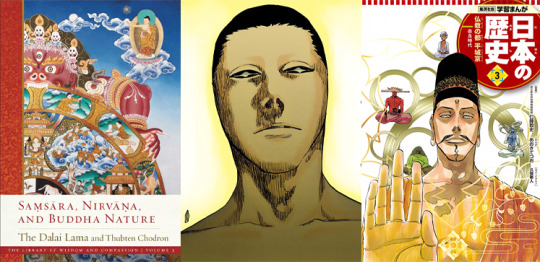
So we know Bleach operates on a loose variation of the Buddhist samsara/rinne, the wheel of reincarnation, in which souls cycle through many lives in different forms, experiences hardships in life and the pain of loss and death continuously until/unless they can achieve enlightenment, as the first Buddha did, and in doing so escape the cycle of death and rebirth, ascending to a higher state of being in which life and death no longer apply. In traditional art of Buddhist cosmology this is represented by the Buddha being present off to one corner, literally physically outside the elaborate illustration of the wheel and its many facets(itself encompassed by the demon mara). This Buddha role is the figure the Spirit King occupies in the hierarchy of the Bleach cosmology, but there are a few little orbital details that are clearly related to that role, but as I stated in the preface to all this, never really go anywhere....

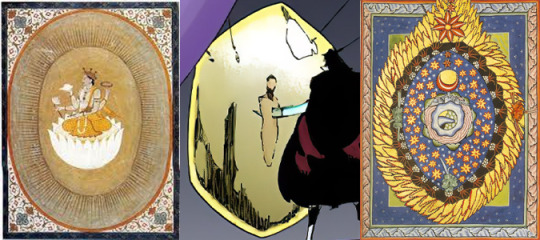
So there's this thing in Hinduism and by some association Buddhism (although it plays more into Hinduism's actual faith in the mythology of their gods, where as a lot of Buddhism may still invoke the divine but ultimately is about undermining and escaping the authority of said cosmological structure) called the Hiranygagarbha[हिरण्यगर्भः] "The Golden Womb"/"Golden Egg," or "Universal Womb"/"Primeval Womb," and is associated with various gods described as Svayambhu[स्वयम्भू] "Self Born," many of which are some variation on a/the creation god --effectively it's just the explanation that while everything comes from something, the original something had to have come from nothing, or else there's just an infinite number of questions that theologians would be forced to come up with infinite answers for.
But it posits that while something may have come from nothing, that something still had to follow certain understood notions of cause and effect, like incubation and birth. Ergo the creator god didn't just blink into existence fully formed, he was "born" from the nothing and as the first and initially only thing to exist he birthed himself. In these myths he is frequently described as initially existing either "beyond" or without senses --obviously the without senses bit mirror's YHWACH's origin, but to exist not without a capacity to see, hear, feel, etc... but in a place or state in which those senses cannot perceive also echo's Aizen's rambling about power levels as he rapidly ascends toward godhood before being beaten surpassed by Ichigo.
But beyond creation myths the Golden Egg is evoked in some elements of meditation in which each person, in their innate capacity for enlightenment and this divinity, has within them their own egg, and to retreat into that egg and explore the potential to self actualized as a mental act of birthing an ideal self, has overt parallels with Bleach's use of an inner world in which the zanpakutou spirit, a reflection of the self and of a potential for power, dwells.

Incidentally the egg also facilitates the creation of the world itself, one half of the discarded shell from the god's birth becoming the realm of the material and the other half becoming the realm of the celestial, and as per some rants I've been on before, between it and some questions about how zanpakutou really work, it reminds me very distinctly of a few other anime/manga where a god spirit's aura or range of influence, for which a lesser spirit's would normally sustain a single person, encompasses a domain in which the totality of other people's existences reside.
In addition the egg itself, a concept called Purusha that is at times a god and at times a concept, is in some myth the creator god in question in relation to the Golden Egg, born from said egg, and then thru their dismemberment by other gods, the world is molded. So obviously some pretty overt, if superficial similarities with the Spirit Kings lack of limbs and, yeah sure if we want to acknowledge it, the LN's feeble additions to lore.
But as a concept it represents self-awareness in the idea that there is a kind of Platonic ideal of the perfect awareness of everything that is in its definitive and empirical state that has become unknowable by the division of that primordial self-awareness, but which exists in fragments in all living things.
The quartering of the body is also the basis of the 4 castes in traditional Indian society; although that dismemberment is not specific to two legs and two arms like the Spirit King's.



But speaking of the spirit king's body parts, there's a neat thing going on with the design of his eyes that got weirdly ditched... In his original appearance the 4 solid black pupils were shown in top-bottom, and left-right orientation, but once he showed up again later, Kubo switched to a 4 corners sort of thing instead. At the time there was no Allmighty reveal and thus no established power of all-seeing yet, but in the eventual context of The Almighty and it manifesting in YWHACH's increased pupil count from 1 to 2 to 3, it becomes apparent that should he reach full potential he would have the same eyes as the Spirit King.
But then what capacity for all-seeing powers has the Spirit King really shown? Well, not a lot in practice, although YHWACH addresses the Spirit King as one who had at one point seen the future. But notably the original design, which had been scrapped and pushed entirely out of mind by the time any of these new contextual details were actually being written in, actually does seem to imply some faculty of all-sight in the Spirit King: The Gotei 13. Their insignia frame, which we typically see with a captain's associated squad number, is shown during an explanation of the Shihouin's Onmitsukidou, is its own symbol even without any numbers. And the insignia appears to be a stylized depiction of the Spirit King's all-seeing eye. Is the insignia itself some kind of magic sigil or artifact, or simply symbolic of a role the Gotei plays? Who can say.

Let's circle back to the Golden Egg though, because the anime changed its color to blue, almost matching the color and style of the generic Quincy spirit bows/arrows. But I personally always instinctively assumed it was a kind of golden hue; something the digital colorist clearly thought as well, which was gratifying. But I also assumed the coloration was something that matched a number of other things, and with very distinct meaning: Orihime's shields, Hacchi's barriers, and the Menos Grande's Negación beams. Before the Spirit King's crystal was even an issue to deal with, there was already a very conspicuous link,
Orihime and Hacchi have the same powers of Event Rejection
Hacchi's Rejection barriers stem from his Visored powers
Hacchi's barriers thus appear to be a more refined Negación
Orihime's powers are said to tread on the authority of God
With those implications in place, it seemed evident that part of the reason for the Spirit King's inertness and imprisonment in the stasis crystal was that thru some divine power, be it his own or someone else's, the crystal exists to reject events happen around/to him to preserve him in a particular state. And since we know it didn't seem to protect him from bodily harm, there would implicitly be a more important and perhaps abstract thing in mind being actively undone.
This in turn would have provided an adequate excuse for Orihime being unable to reject the crystal being broken, and the Spirit King's injuries within it, because as we learned from Hacchi; she has to understand what she's rejecting, and those powers are most potent when aimed at the abstract(an event) and not an object(an injury). For her to reject a rejection would mean understanding the nested abstract events taking place, which frankly no one was ever brought up to speed on, whether we're talking my theories here or the actual canon of the manga.
This I would have found much more acceptable than Kubo falling back on "Important character too strong, implicit functions of established powers don't work on him." Which is a bad habit Kubo has just in general; he never actually thinks out the implications of how world building on the plot he's writing, he just muscles thru it by making up new excuses, rather than going back into what he's already established to find interesting ways for preexisting abilities or factoids to interact. He very consistently fails to "yes, and..." himself.

Anyway... There's also a little followup on my persistent rambling about the nature of hollows and of the elusive Vastolorde. Until the revival one-shot just a few years ago, it was easy to forget about Hell in Bleach considering it never really came into play. But there was one interesting point made that hollows who have sinned in life go the hell, while the others are purified. Most hollows implicitly are just spirits of the dead overcome by powerful emotions, but their monstrous qualities aren't considered a sin, they're an animal-like instinct.
And this is addressed, if only barely, by Zommari's indignant rant against the moral authority of the Shinigami; that the natural way if things is to let hollows exist, but the shinigami invented the morality and ethics of "protecting" humans from hollows, and "purifying" hollows with zanpakutou. And we know from the example of someone like Nel that the Arrancar process returns a kind of human intelligence and morality to a Hollow, even across the process of individual spirits becoming hollows, amassing into colony minded Gillians, and then reemerging unique personalities as Adjuchas.
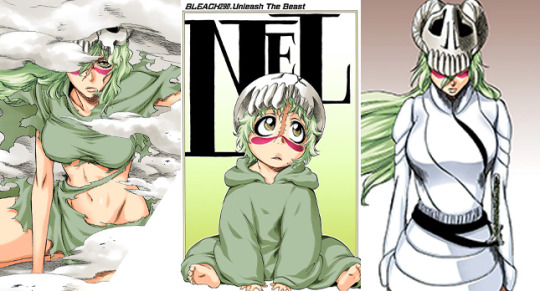
I still maintain the real/sensible trajectory of the Nel plot should have been that she was a Vastolorde, that Nnoitra was sent to hunt Vastolorde, but threatened by her and infuriated by her power tempered with human morality, was beat and spared but took a cheap shot to break her mask, effectively forcing her into being a mock-arrancar, like Isshin and Urahara discussed, and so Nnoitra reported back negative results on the hunt to guard his own position in the Espada. But in the face of being unable to find enough surviving Vastolorde, Aizen's plan would be to take existing mock-arrancar and have Orihime reject the event of their mask removal, so that he can remove it via the Hougyoku.
In this way I think Nel could have had her generic hot-girl-ification in a more sensible and satisfying way than magic cloud of smoke de-baby-fication. I think it also would have made for a cool reveal for Orihime's uniquely abstract event rejection --as opposed to time reversal-- to mean that although the process of her transformation would be undone, her experiences post break would not, thus she'd still remember Ichigo and be able to turn on Aizen and join the good guys accordingly.

Anyway, even without all that, Nel and her goofballs, and to a lesser extent Starrk and even Ulquiorra, and sort of Harribel, all prove that the Arrancar are capable of a pretty normal moral spectrum and aren't in fact just evil or monsters all the way down. In fact, it was always kind of present since Sora's chapter way back in the beginning. In fact, Sora was the first Hollow to be drawn with the now iconic double mouth, the prior two were just monsters. Sora however showed his human mouth behind the mask, and that was a feature that would carry forward from there. In fact, at the end of chapter 25 there is also the original arrancar hook, where we see Aisslinger perform surgery on GrandFisher. But while the main event is the removal of the mask, there's also the bodily surgery taking place that suggests that what would later be identified as the mock-arrancar process involves digging the humanoid back out from under not only the mask but the hollow's inhuman, bestial body as well.
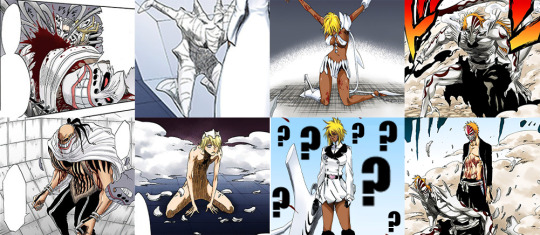
This is in turn echoed when we see Wonderweiss born as an arrancar in a much cleaner process, but one not dissimilar to Grandfisher's; his wrapped hollow form, while generally humanoid --and thus implicitly a Vastolorde-- also clearly includes some large protrusions that are stripped away along with the majority of his mask. And as Uryuu relates from Urahara's briefings, the more human form also means more human intelligence. Along with the apparent moral fiber of the matter it really seems like when a hollow gets more human, it gets more human in almost all respects. (ignore that harribel bit in the image there, we'll come back to it...)
So what happens when they get the most human?

I've also gone over my whole thing before that the Nelgal Ruins seemed like the natural evolution of the architecture of the menos grande, lending yet another level of humanity to the hollows: society. More over, my crackpot headcanon that in the human development of the Vastolorde they discovered religion, and comprised the first cult of YHWCH.
Of note in this random line of thought is that fact that Lille Barro is considered to be the first Sternritter given a schrift. It's not clear if that means that the sternritter we know are considered contemporaries (even ignoring the confusing timeline of Juugram and Bazz-B's whole flashback) and among them Lille is the first among them, or if there have been prior generations of sternritter and Lille is as survivor of some batch of sternritter long predating the current recruiting push.

But there is the question of if Lille is an arrancar or not. He somewhat conspicuously speaks Spanish, although the Sternritter do have a loosely international shtick going on in their roster. But he also has a lot of design notes in common with Starrk, although it's super unclear if that's applicable to in world logic, or just a pattern in Kubo's art. The biggest hiccup in this would perhaps be that he has no signs of a mask fragment, but then the same went for Luders Friegen. Notably Asguiro Ebern still had a mask and Luders made a point to speak down to him. While we never got any clarification on that, I think it seemed like the superiority complex came from being less arrancar-like. And I wonder if there wasn't a process by which the Wandenreich were removing mask fragments in their entirety, resulting in a kind of forced and imperfect humanization process, but from which highly humanoid and thus Quincy-fiable arrancar could be produced.
And while the shot of Harribel was obviously just fanservicey battle damage, I like to think that the plan was to convert her, and that she was in the process of having her bone armor components stripped off, not unlike the process Grandfisher and Wonderweiss underwent: it resembles Wonderweiss' in posture, but Grandfisher's in bloody tortuous overtone.
Primitive Arrancar, without the ability to gain shinigami-like powers via the hougyoku, stripped of their masks might theoretically regain human intelligence, but would lose their masks and sense of self with no way of storing it in a sword let alone being able to retrieve it. What better subjects to manipulate with the promise of a discovery of self and of identity; drink of YWHACH's blood and receive the sense of self you lack. Something to fill that hole in your heart.

Then there's the thing I mentioned earlier about how there's some interesting implications about what it means to throw a bunch of spirits together into one superdense thing. And it turns out a lot of them seem to be pretty similar...
You throw shinigami souls together to make white, who is himself like an asauchi.
You throw i guess also shinigami(?) "something similar" together to get asauchi according to Oh-etsu
You throw powerful human spirits together and get the King's Key.
You throw hollows together and get a menosgrande
and if we care to dip a toe into the LN (which normally I would hesitate to do) we have at least one other zanpakutou, besides White, explicitly crafted from a menosgrande
and when the miracle baby reclaims quincy spirit power you get YWHACH
My supposition then is that the reason Vastolorde were so rare, and explicitly in hiding from Aizen, was that in the first place hunting menos is how the asauchi are created. The very first time we see a Gillian, Rukia even comments that it's the Royal Guard's job to take care of them, not regular shinigami. As the power scale of the series naturally escalates that begins to feel silly, but what if that's not because only the Royal Guard can defeat them, but because the Royal Guard and Oh-etsu in particular are uniquely suited to hunt/harvest them so they can be turned into new asauchi.

And in a way, if the Spirit King is indeed locked in a meditative state in his golden egg, if indeed the god sleeps in the egg, and the egg is the center of the world, and the world is the egg. If the world itself is the Spirit King's inner world, his bankai manifesting the internal as reality, then what is YHWACH if not the Spirit King's sword spirit? In the same way YHWACH is already a part of zangetsu within Ichigo. A reflection of the self, however dark, convinced that godhood is not in the Spirit King's best interest and determined to tear him from that throne? Is that not exactly what the fused Zangetsu tried to do in stopping Ichigo from learning the final getsuga and fighting Aizen? What is YHWACH's war on soul society but the struggle between two mirrored entities over who gets to stand at the top and who has to crawl around in the shadows?
What is the difference between a king and his horse?
#bleach meta#apocryphal meta#the meta meta?#just gibbering nonsense headcanon#and yarn and corkboard web weaving#it was already kinda unmoored to begin with#but i really lost track of where i was going somewhere in all this#so i just took the opportunity to end on a pretentious bleach quote when the chance presented itself
102 notes
·
View notes
Text
The Monkey King 2 (2016) 西游记之孙悟空三打白骨精











Director: Zheng Baorui Screenwriter: Ran Ping / Ran Jinan / Wen Ning Starring: Aaron Kwok / Gong Li / Feng Shaofeng / Xiao Shenyang / Luo Ziyi / Fei Xiang / Kelly Chen / Ngawang Rinchen / Peng Yu / Cheng Dong / Liu Chutian / Yu Xin / Wei Lu / Qi Xier / Mu Qi Miya / Zhang Zimu Genre: Comedy / Action / Fantasy Country/Region of Production: Mainland China/Hong Kong, China Language: Mandarin Chinese Date: 2016-02-08 (Mainland China) / 2024-09-14 (Re-release in Mainland China) Duration: 120 minutes Also known as: Journey to the West: Havoc in Heaven Sequel / Journey to the West: Three Strikes of Bone Demons / Three Strikes of Bone Demons / 西遊記之三打白骨精 / 西游记之大闹天宫续集 / 西游记之三打白骨精 / 三打白骨精 IMDb: tt4591310 Type: Retelling
Summary:
500 years after Sun Wukong's (Aaron Kwok) imprisonment under the Five Fingers Mountain, a young Buddhist monk Tang Sanzang (Feng Shaofeng) sets out for a journey to the Thunder Monastery in India to collect Buddha's scriptures. When he is attacked by a tiger, he is forced to free Wukong and the Monkey King learns that he has to protect the monk throughout the journey, because the Bodhisattva Guanyin ensured he would be bound by an enchanted circlet that can cause him pain whenever Tang Sanzang chants a certain sutra. Soon the duo meet Zhu Bajie (Xiaoshenyang), a lustful pig demon, and Sha Wujing (Him Law), a djinn-like monk. He fights a dragon, defeats it and transforms it into a horse as his mount.
The company travel to the Yun Hai Xi Kingdom, a land terrorized by the White Bone Demon (Gong Li) who has been eating people in order to extend her unnatural life and avoid the Wheel of Reincarnation. As the demoness learns about Sanzang, she decides to eat him in order to stop her reincarnation cycle and achieve everlasting demonhood. She takes the appearance of an old woman and lures the group into a cottage in the woods. To prevent Wukong from using his truth-seeking eyes to see through her disguise immediately, she throws tainted dust into his eyes that clouds his sight. Then while her disguised minions keep Wukong, Bajie and Wujing occupied, the demoness tells Sanzang a story about how she was forced to marry as a young girl, and when her village suffered famine, the people blamed her for it, even calling her an evil demon, and attempted to kill her as a sacrifice to the gods. As Tang comforts the old lady, she attempts to kill him, but is stopped by Wukong. The demoness escapes before Wukong can deal the killing blow and leaves the dead body of the old lady behind. Sanzang and the others don't believe Wukong that all the women he murdered were demons, and blame him for killing the innocent. Sanzang punishes Wukong by chanting the sutra and causing the circlet to tighten painfully on his head. Afterwards, Sanzang climbs to the top of a mountain where Wukong is sulking. Sanzang tells Wukong he thinks they are both very alike, for they both only trust what their own eyes sees. But together, they are better able to discern the truth. This is why they were all chosen to be on this journey together.
The group arrives to the kingdom's capital and the King (Fei Xiang) throws a feast for them, begging Sanzang to exorcise the bloodthirsty demoness from their land. Suddenly Lady White appears and demands the monk, but he offers her his help in enlightenment instead. She tells Wukong that they are both very alike, and tries to persuade Wukong to let her devour the monk, but he deceives her instead and a fight ensues. During the chaos, the King's guards kidnap Sanzang. It is revealed that it's actually been the King kidnapping and killing the children in a desperate attempt to cure himself of a cursed disease by drinking their blood. He tries to kill Sanzang, but Wukong arrives and saves the monk and the surviving children as well. All of the group are celebrated as heroes, but as a little girl approaches Sanzang, Wukong beats her and her mother to death as well, because his truth-seeking eyes perceive both were possessed by the White Bone Demon. In a fit of anger and disbelief, Tang banishes Wukong away. As soon as Wukong leaves, Sanzang gets kidnapped by the demoness.
In the demoness' lair, the White Bone Demon gives Sanzang a day to convince her to give up her evil ways and embrace nonviolence and enlightenment as the true path to immortality. She reveals to him the story she had told him earlier was true, recounting her previous life as a mortal. Right before Sanzang's time is up, he is saved by Wukong at the last minute. Wukong, Bajie and Wujing fight the White Bone Demon and her army and finally defeat her, with Wukong mortally wounding her. The Buddha comes down from the Heavens to collect the defeated demoness' soul and banish it to oblivion but Sanzang pleads Buddha to grant her mercy and give Sanzang one last chance to save her soul from destruction. Buddha tells him that he would have to lead her on the path herself, meaning he would have to sacrifice his own life. The monk begs the demoness to show remorse and accept the Wheel of Reincarnation, but the White Bone Demon would rather die as a broken tainted soul in Sanzang's body instead of returning to the Wheel of Reincarnation. Saddened, Tang begs Wukong to kill him, too. The Monkey King refuses at first, but Sanzang explains how he used to think he just had to recite Buddha's teachings to convince people to become good. Now he understands he must also lead by example and do good in order to convince people. Sanzang had to do this for his own journey towards enlightenment. Wukong finally understands the monk's desire to help the demoness change her fate, and tearfully agrees, promising Sanzang to wait for his return. Wukong brings his staff down and Sanzang's body is changed into a statue. In return Sanzang says if he gets a chance to do so in his next life, he would be glad to be Wukong's master again. Because of Sanzang's sacrifice, he succeeds in leading the demoness to her next reincarnation, freeing her of her pain and hatred.
Some time later, Wukong and his friends still wait for the return of the monk, but continue their journey to the Thunder Monastery. Wukong rides on Sanzang's horse with Sanzang's statue strapped to his back. From Heaven, Guanyin drops a bead of water from her magic vase that falls to earth and hits right at Sanzang's hand. The surface cracks, revealing a human finger underneath.
Source: https://movie.douban.com/subject/25827963/
Link: https://www.youtube.com/watch?v=_A7XSayGf04
#The Monkey King 2#西游记之孙悟空三打白骨精#Journey to the West: Havoc in Heaven Sequel#Journey to the West: Three Strikes of Bone Demons#Three Strikes of Bone Demons#西遊記之三打白骨精#西游记之大闹天宫续集#西游记之三打白骨精#三打白骨精#jttw media#jttw movie#movie#live action#retelling#rewrite#sun wukong#zhu bajie#sha wujing#tang sanzang#The Monkey King#Sun Wukong#White Bone Demon#Tang Seng#Zhu Bajie#Sha Wujing#King of Yunhaixi#Guanyin#Porcupine Demon#Bat Demon#Snake Demon
19 notes
·
View notes
Note
Omg I thought Korn would actually shoot Win after he accidentally shot Tonkla, something in me thought he'd go feral and cause havoc 😭 HIS EYES!!!! BAS WAS ACTING LIKE HIS RENT WAS DUE OH BAS I LOVE HIM!!!! THE SHAKING OF HIS HANDS, HIS WEEPS AND CRY!!!!! OH GOD COULDN'T GET OVER IT. IT HURTS SO MUCH. Poor Korn and Tonkla, atleast, and I hope they're together now at peace. With Dome too? I guess?
For a moment it might have seemed so, but Korn was solely focused on Tonkla once he got shot. He understood it wasn't Win's fault Tonkla died - even though he's the one who shot him - but himself, due to his own stupidity.
Bas truly blew me away in 4 Minutes, and I had already been blown away by his acting in Man Suang. The man is insanely talented, and I'm so glad Pond keeps giving him opportunities to prove himself in all the projects he's been a part of since KPTS.
Judging by what the show gave us, it's implied they will be together in their next life. Unfortunately, that doesn't include Dome - reincarnation doesn't work in the way we've come to know the afterlife from Christianity (aka, a place in heaven/hell where all souls meet after death).
That's not a sad thing, but a thing that just is. I told @wretchedamaranth the other day about how 🥺 it'd be if Korn and Tonkla got reincarnated as cats in their next life - a level lower than a human due to their bad karma, but not the lowest level there is in the Buddhist cycle.
It's a bittersweet thought in retrospect, but they'd be together again, so it wouldn't be so bad imo.
#I've seen a lot of takes from people that show a lot of ignorance about Buddhism and it rubs me the wrong way#I'm not an expert in any sense of the word and I may have made mistakes in this post too#but at least it's essential to recognize the cultural framework of the show in order to properly analyze it#instead of accusing it of redeeming characters or punishing characters or whatever the fuck because you didn't like the ending#sorry anon I took the chance to talk about it since you mentioned KornTonkla being together in peace etc#it's important to me and it's fascinating to talk about regardless#4 minutes#korntonkla#asks
21 notes
·
View notes
Text
THE SIGN EPISODE 8 – WANWISA'S WARNING
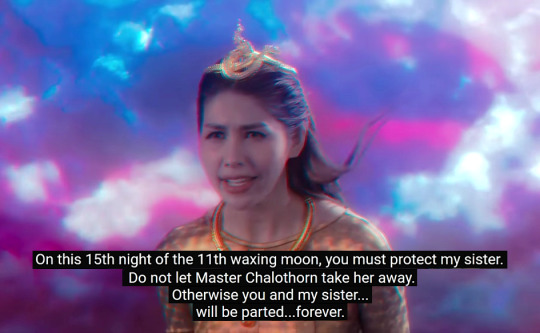
We've been told before in The Sign that the 15th day of the 11th waxing moon is a date that is especially significant and powerful for the nagas.
The last day of the Buddhist Rains Retreat (also called Buddhist Lent by some), this date (Wan Ok Phansa) is mentioned by nagini Wansarut to Phaya's previous garuda incarnation at Ep.8 [3/4] 8.37 as the date when the Buddha returned to the human world "from the second heaven where Indra dwells", and the nagas and naginis breathed out fireballs in his honor.

And this is why the Naga Fireball Festival is also held around the time of Wan Ok Phansa.
Separately, at Ep.3 [3/4] 12.26 (when Tharn and Phaya explore the Dinphiang Cave) Sand's voiceover also recounts the legend of the naga princess who is compelled to return to her watery homeland underground on the date of Wan Ok Phansa (the 15th day of the 11th waxing moon, or the last day of Buddhist Lent), and loses her human lover in the process.
So Chalothorn must have been biding his time for this particularly auspicious date to come around, when he would finally be empowered to take back his betrothed nagini princess, and break the connection once and for all between garuda Phaya and naga Tharn/Wansarut (and is the gist of Wansarut's golden nagini sister Wanwisa's warning).
Chalothorn must have been attempting to kill Phaya from early on in order to prevent him from obstructing the greater scheme of reclaiming Wansarut/Tharn from the reincarnation cycle and reinstating his nagini's semi-divine status, away from the garuda.
But of course all attempts on Phaya's life by Chalothorn were futile, as he was under the protection of Tharn's nagini-soul amulet (that the Thai subtitles also call a naga gem, akin to Wansarut's heart) – the physical embodiment of Wansarut's dying vow to protect her beloved garuda throughout all future reincarnations:

Wansarut's vow here also reveals the supernatural impetus behind all the times Tharn saved Phaya's life earlier, e.g., during the Ep.1 mock-hostage rescue and open water challenge, the encounter with the masked Molotov knife-man in Ep.4, and the battle with the tattooed serial killer in Ep.5. 😢
It's consistently been the bigger, macho Phaya being saved by the smaller, slighter Tharn/Wansarut. And this is just one of the many ways that The Sign has been bucking expectations of a Thai BL series. 🤩 But come the next Wan Ok Phansa it will be time for Phaya to prove his worth in return, and battle to save his fated lover Tharn/Wansarut from the clutches of the possessive naga Chalothorn instead. 😔
#the sign#the sign the series#naga and garuda#phayatharn#the sign phaya#the sign tharn#the sign wansarut#the sign wanwisa
57 notes
·
View notes
Note
Wait aren’t sponges like, functionally immortal? Can something that technically can’t die become a bodhisattva?
Wait am I thinking of jellyfish
neither, you are thinking of a specific jellyfish, Turritopsis dohrnii. That said, something that is immortal is definitionally unable to become a bodhissatva and is representative of antithesis to Buddhist principles of enlightenment. The point of dharma is that you're supposed to get closer to enlightenment gradually, over many lifetimes, except this is often misrepresented as reincarnation on a personal level. You are not one soul being reincarnated again and again. You do not exist. The concept of the greater nonself, the idea that you as a singular entity rather than belonging to the entirety of collective is called Anattā. A lot of Japanese ideas of aesthetic and beauty come from the belief of Buddhism of finite-as-metaphor. The cherry blossom viewings are a whole thing explicitly because they're only around for like a week and there is absolutely no way to get around that. They are beautiful and important because you can only appreciate their beauty for such a short time, and you are powerless to stop that nature. Leaf, bloom, fruit, wilt. Cycles keep going.
202 notes
·
View notes
Text
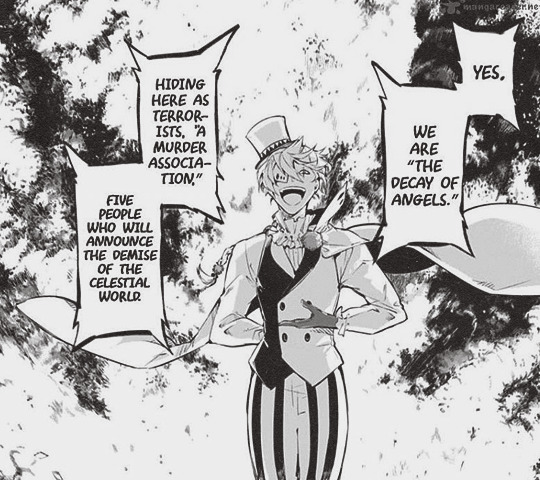
BUNGO STRAY DOGS VS LITERATURE: THE DECAY OF ANGELS
This is going to be the first in a long (long) running series where the goal is to read every single book mentioned by name in Bungo Stray Dogs, and try to connect the themes of that book to the characters who are referencing that book. In light of the recent arc I am starting out with "The Decay of Angels" the villainous organization consisting of Bram Stoker, Nikolai Goggol, Fyodor Dostoevsky, Ochi Fukuchi and Sigma.
The name Decay of Angels comes from Yukio Mishima's novel, the Decay of the Angel. The fourth and last book in his Sea of Fertility tetraology which is widely considered to be his masterpiece. I read all four books, so underneath the cut I'll elaborate on the connections between Yukio Mishima's work and Bungo Stray Dogs.
1. The Decay of the Angel
The Sea of Fertility is a tetralogy of novels written by Japanese AUuhor Yukio Mishima. The four novels are Spring Snow, Runaway Horses, the Temple of Dawn, and the Decay of Angel. The main timeline of the story stretches from 1912 to 1975, the main character of all four books is Shigekuni Honda a law student in Spring Snow, who's best friend Kiyoaki Matsugae dies at the age of twenty at the end of the first book. In each sequel, Shigekuni meet what he believes are the reincarnations of Kiyoaki, who are condemned by karma to die at an early age. Every time he attempts to save them from their deaths he fails.
The strongest connection between the Sea of Fertility itself, and the "Decay of Angels" organization depicted in Bungo Stray dogs is that both are heavily inspired by Buddhist ideology. The Sea of Fertility is an exploration of the concepts of both "reincarnation" and "karma" while the ideology of the decay of angels is to enact Karma in the real world for the past sins of the governing body.
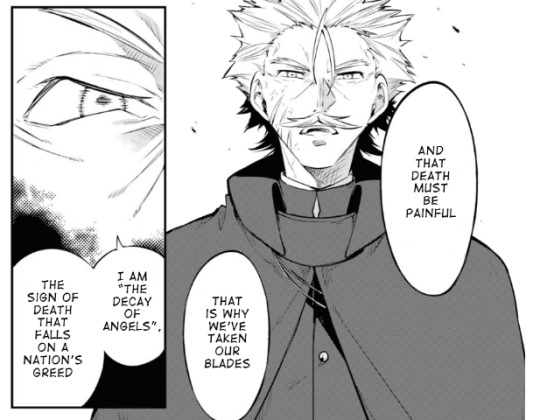
The brihadarankyaka Upanishad states: Indeed the person performing a good deed will become benevolent, and one performing a bad deed will bcome evil; one becomes pure by pure acts, and black by evil acts. Therefore it is said: a human being is composed of karma, or "desire" by following karma one creates will, by following will one creates karma, and through karma, samsara comes into existence." The Temple of Dawn
Both the ideology of the Decay of Angels, and Yukio Mishima's work make constant references to budhism like this. Budhists conceive of the world as a suffering-laden sycle of life, death and rebirth without beginning or end known as Samsara. In essence in budhism, beings are driven from life to life in this system by karma which is activated by good or ill actions committed in this life as well as previous lives. Fukuchi's goal is more or less to make Karma real and enact it with his hand, to punish governing bodies for their past sins.
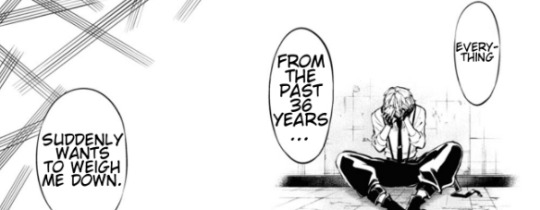
His ideals are also heavily budhist in nature, more or less budhists believe suffering in inherent to life. The goal of budhism is actually to stop being reborn and escape the cycle of death and rebirth by eventually purifying yourself of earthly desires, etc. etc. Fukuchi's goals allign with these ideas. Just like reality and earthly desires inherently cause suffering. As long as governments exists, they will continue to create war. The only way forward is to create a death and rebirth. Governments have to die, so society as a whole can be reborn into a higher, more enlightened state. He is essentially twisting lofty budhist ideals to justify his extreme political actions.

Bungo Stray dogs also borrows some symbolism from the fourth book, the Decay of the Angel. In budhist scripture Devas are mortal angels. A topic the fourth book discusses at length.
Here is the account in the twenty fourth fascicle of the Ekottara-augama: "There are thirty-three angels and one arch angel, and the signs of death in them are fivefold. Their flowered crowns wither, their robes are soiled, the hollows under their arms are fetid, the body ceases to give off light, it loses awareness of itself." Decay of the Angel

There are five members of the decay of angels in BSD, Fukuchi, Fyodor, Goggol, Bram, and Sigma, just like the five stages of decay. Just as in budhist belief death comes for everything, even the angels, the stated goal of the organization is to bring death to the members of the world's government. Quite literally in Fukuchi's case, by controlling a vampire army (vampires being symbols of death due to being undead and bloodsuckers themselves).
2. Death and Rebirth
The main premise of the Sea of Fertility is tracking the four reincarnations of one individual. Each successive reincarnation lives a short life and dies for the sake of an ideal.
'Kiyoaki Matsugae was caught by unpredictable love, Isao Iiinuam by destiny, Ying Chan by the flesh. And you? By a baseless sense of being different, perhaps? If destiny is something that takes hold of a person and drags him after, then the other three had desinty. And has anything caught you?' The Decay of the Angel
The whole organization of Decay of Angels, is seeking a somewhat symbolic death and rebirth of society, but at the same time as individuals four members are seeking to die for the sake of an ideal like the four lifetimes of Kiyoaki.

Gogol's may seem to be the simplest, to commit suicide in order to free himself entirely from god's will. He may be a russian character, but even some of his ideals are budhist. One of the major differences between Budhism and Hinduism as commented on in the books, is that Hinduism believes in the divine whereas in Budhism there are no gods. Not only do they reject gods, but they also reject the idea of a "soul."
"Budhism does not recognize the soul as such. If there is no core substance called soul in beings, there is of course, none in organic matter. Indeed quite like a jellfyfish devoid of bone there is no innate essence in all of creation. . If we assume there is no self, what is the basis of the birth-and-death cycle to start with?... WHen the Threavada Sautranika school evolved the concept of "seed perfurming" was established according to which the effect of a good or bad deed remains in ones consciousness, permeating it as the fragnace of perfume permeates clothes and thus forms character."
Gogol's ideal is similiar to that belief, he rejects both the idea of god, and the idea of his soul, in order to prove that all that exists of the universe is his free will and consciousness. He even goes through a metaphorical death and rebirth in order to reach that ideal, he fakes his own death, and then is revealed to be alive.
There's even a discussion of free will in several of the books, particularly the fourth.
"He should have armed them with the foreknowledge that would keep them from flinging themselves after their destinies, take awaay their wings, keep them from soaring, making them march in step with the crowd. The world does not approve of flying. Wings are dangerous weapons. They invite self-dstruction before they can be used." Decay of the Angel
If you wanted to parallel him to one of the lifetimes, you could even say he is much like Kiyoaki, someone caught up in an unpredictable love. At one point in the story, as he's dying of sickness he continues to try to visit his lady love every day for the sake of seeing her one last time and considers facing his impending death to be a trial to prove his love. Gogol similiarly puts his closest friend through a life or death trial to see if his feelings spring forth from himself and his own free will, or are brainwashing.

"I'd tell myself in it was because I was insincere. I'd know in my heart that if only I had gotten out of the rickshaw and walked, no matter how weak I felt, then such sincerity - even if she was unaware of it - would have affected her, and she would have seen me. That's it then. There's no reason to have such regrets. I have no other choice but to risk my life, if I want to see her. To me, she's the essence of beauty. ANd it's only that which has brought me so far." -Spring Snow
The second lifetime lived by Kyoaki is that of Inao who is a far-right extremist in Japan, who wishes to see japan return to its more imperialist ideals. As a whole these novels take place over a time frame that's post the russo-japanese wars, all the way to the lead up into world war two, and then post world war two. There are pretty obvious references to world war two (the island where Fukuchi fought on being a reference to Okinawa, Ahabaraki being a reference to the nuclear bomb). Bungo Stray Dogs also clearly takes place in a post-war society. The motivation of the current villain Fukuchi is the mistreatment of soldiers during that previous war.
Fukuchi resembles Isao, the far right extremist. In the second book there is a long recounting of the history of the Satsuma Rebellion. It was a revolt of disaffected samurai against the new imperial government, nine years into the Meiji Era. In the book it’s mentioned they prayed at a shrine a number of times, and waited to rebel until they believed the god’s themselves approved of their rebellion. The main character of the book Isao wants to enact a similar rebellion against the government to rid Japan of western influence and to make the emperor all powerful again.
The sins I refer to have nothing to do with the law. And the greatest sin is that of a man who, finding himself in a world where the sacred light of His Majesty is obscured, neverthless determines to go on living without doing anything about it. The way to purge this grave sin is to make a fiery offering with one's own hand, even if that itself is a sin, to express one's loyalty in action, and then commit seppuku immediately. With death, all is purified Runaway Horses
The goal of the main character is to "before the sun... at the top of a cliff at sunrise, while paying reverence to the sun... while looking down upon the sparkling sea, beneath a tall, noble pine... to kill myself..." He is a man who wants to commit a sin he believes will put his country on the right track, and then die for his country. He also believes the only way forward is a military coup (guess what happens in japan in a couple of years). Fukuchi's goal may be the opposite, but he still uses the same methodology. He has seized full and total control of the world's governments acting as an ultimate emperor to achieve his goal. Everyone else is just instruments and puppets to him, he literally changes them into mindless zombies.
"Here was the power of the emperor himself. Only on this drill ground was the hand of the sun working with a mathematical clarity and precision. Only here! The will of the emperor penetrated the sweat, the blood, the very flesh of these young men, piercing their bodies like X-Rays." Runaway Horses
Fukuchi's goal is essentially to fight imperialism by using tools of imperialism himself. He also invokes the divine when fighting against Akutagawa and Atsushi, saying he carries and enacts the divine will. He is focusing all power on himself, the same way Isao wished for the emperor to have total control and authority of the country once more to purge out western, socialist, and capitalist influence.

He also, just like Nikolai experiences a death and rebirth on the battlefield. Fukuchi was once manipulated like Isao by far-right ideals that joining the military would equate to protecting both his comrades and his countries, only to be eaten up and chewed out by the war-machine and not accomplishing protecting anyone but the governments already in place, creating the current Fukuchi.


Just like the deaths of his comrades were wasted, Isao also experiences a disapopinting suicide which is the exact opposite of what he wanted, and the ideal of dying with honor presented throughout the story. Which clearly illsutrates all the militaristic and far-right ideals Isao believed in through the story, were proven false and nil by the end.
“The sun will not rise for some time,” Isao said to himself, “and I can’t afford to wait. There is no shining disk climbing upwards. There is no noble pine to shelter me. Nor is there a sparkling sea.”
Runaway Horses
The third book features Thai Princess Ying Chan who is said to have been caught by the flesh. This will be the shortest section because the third book is very dark, but basically the third book the Temple of Dawn deals with how the elder generation of japan, preys upon and takes advantage of the youth. Ying Chan because of her youthful body, is molested by two adults who she trusts.
Sigma is someone similiar to Ying Chan, a youth who is born and then continually used by everyone around him in his life. He is the ultimate child taken advantage of by society passed over again and again due to being born from "nothing."


The last reincarnation depicted in the fourth book "The Decay of the Angel" deals heavily with themes of nihilism, and deeply resembles Dostoevsky. Especially if you believe Fyodor is in part an adaptation of Raskolnikov's theory that truly great people should be above morality as depicted in crime and punishment.
Toru's goal in the Decay of Angels, is to devote himself to a pure form of evil and get lost in the pursuit of it. He is depicted as a twenty year old exceptionally brilliant individual who does not form relationships, is detached from the society around them, has no strong pursuits except for this, and his highly nihilistic believes. The kind of nihilism that is portrayed for its flaws in many of Dostoevsky's works.
"My purity will presently wander beyond the horizon to that invisible realm. Probably not on the end of unbearable pain, I shall seek to become a god. The pain! I will know of it, the pain of absolute silence, a world of nothing at all. I will crouch in the corner, like a sick dog. And the happy ones will sing songs around me. There is no medicine for it. No hospital. It will be written in tiny gold letters somewhere in the history of the race: that I was evil."
Which mirrors the description of Fyodor in his introduction as something "Darker than evil, something horrifying."
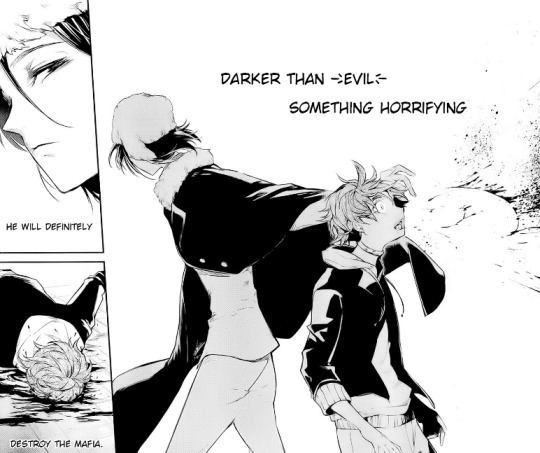
Fyodor is also someone with a large blind spot when it comes to ordinary people, this is something he is lectured on by Dazai. That he believes he has enough control like a player sitting outside of the gameboard that he can control the movment of every single piece. That the world is controlled by great people manipulating it. Whereas Dazai's beliefs are the world is controlled by everyone's actions moving together in an unpredictable fashion, rather than a god sitting outside manipulating things.

Toru receives a similar lecture because he bbelieves himself to be some kind of great man due only to his extra intelligence and how isolated he is from others.
"There is no special right to happiness and none to unhappinnes. There is no tragedy and there is no genius. Your confidence and your dreams are groundless. If there is on this earth something exceptional, special beauty or special evil, nature finds it out and uproots it. You thought didn't you, that you were a genius beyond compensation. You thought of yourself, didn't you, as a beautiful little cloud of evil floating over humanity." The Decay of the Angel
Which seems to be the lesson that the story is going in the direction of teaching Fyodor, that there is no such thing as inherent specialness, exceptional people, gods or demons.

Fyodor is also someone who while he has no undergone a death himself, his goal is to deal death, which he seems to be able to do with just a touch of his hands, in order to make the world reborn into a “world without the evil of ability users”. Death, birth, and rebirth are themes that are strong with all five of these characters.

As for Bram he’s the character we know the least about, but I would say while Fyodor, Fukuchi, Gogol and Sigma can be equated to individual lifetimes of Kyoaki, Bram himself being an immortal vampire and oldest of the group is much like Honda who is an outsider and witnessing the lives of young people being reborn over and over again. Especially since by the fourth book he is eighty years old and essentially a helpless elder. The various lifetimes of Kiyoaki die young, he lives on a much emptier life than any of them. Bram’s just a head. He’s the most helpless of the whole group. He’s just a witness to all of this. But he’s also an immortal vampire, so therefore an outsider to the cycle of death and rebirth.
Well, that is all I have to say about “The Decay of the Angel” and the connection to the “Decay of Angels” depicted in Bungo Stray Dogs, and the five members who make it up. I fully reccomend picking up the book, just as Bungou Stray Dogs is shaping up to be anti-war in its text and the depiction of several successive generations (the war generation, the post war, the Sea of Fertility is a massive work referred to as “the most complete vision we have of Japan in the 20th Century” by Paul Theroux. It deals with similiar themes in BSD of the changes between generations, the shift in society of japan in the last century, the influence of imperialism. If you want to pick it up and read it, it comes highly recommended by me!
#bsd meta#bungou stray dogs meta#bungou stray dogs theory#bungou stray dogs#bungou stray dogs analysis#fyodor dostoevsky#bsd fyodor#nikolai gogol#bsd gogol#fukuchi ochi#sigma#literature analysis#the decay of angels#yukio mishima#decay of angels#doa
382 notes
·
View notes